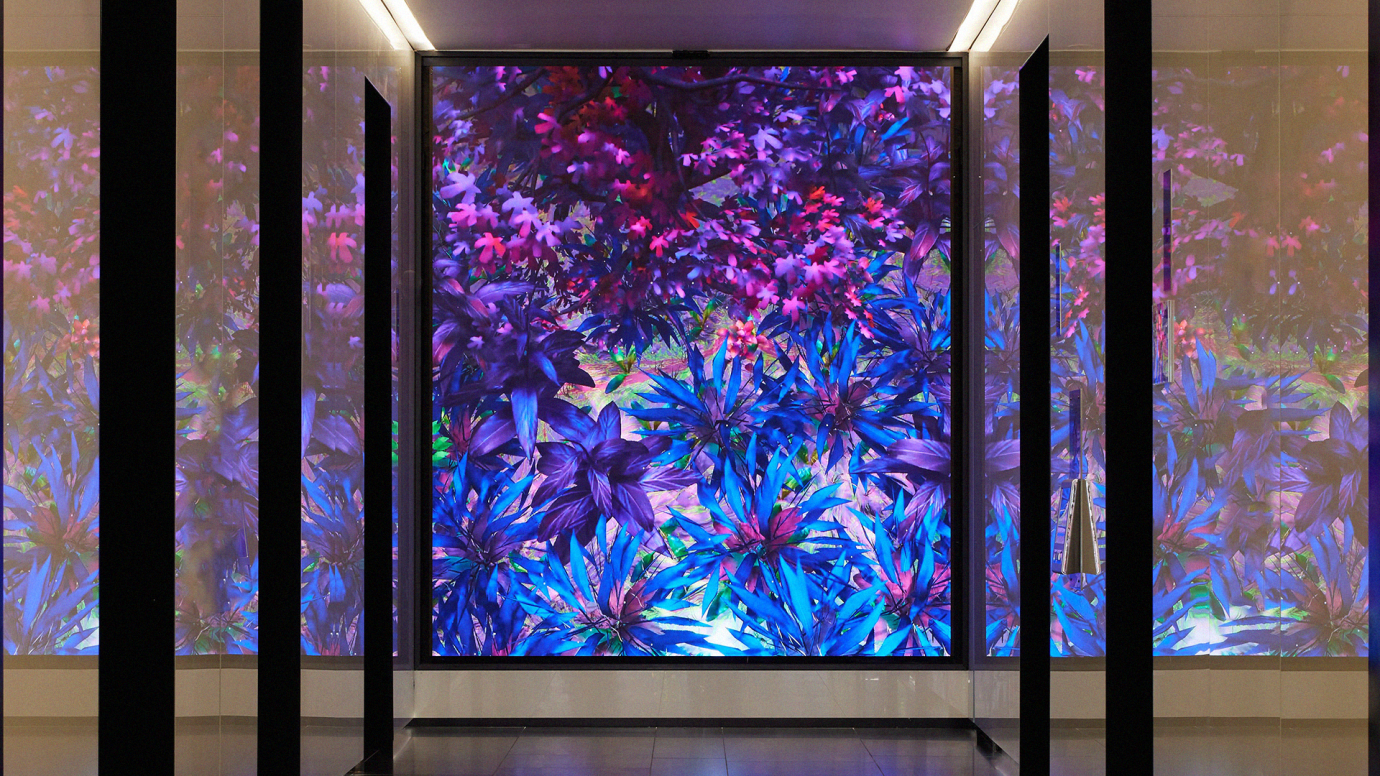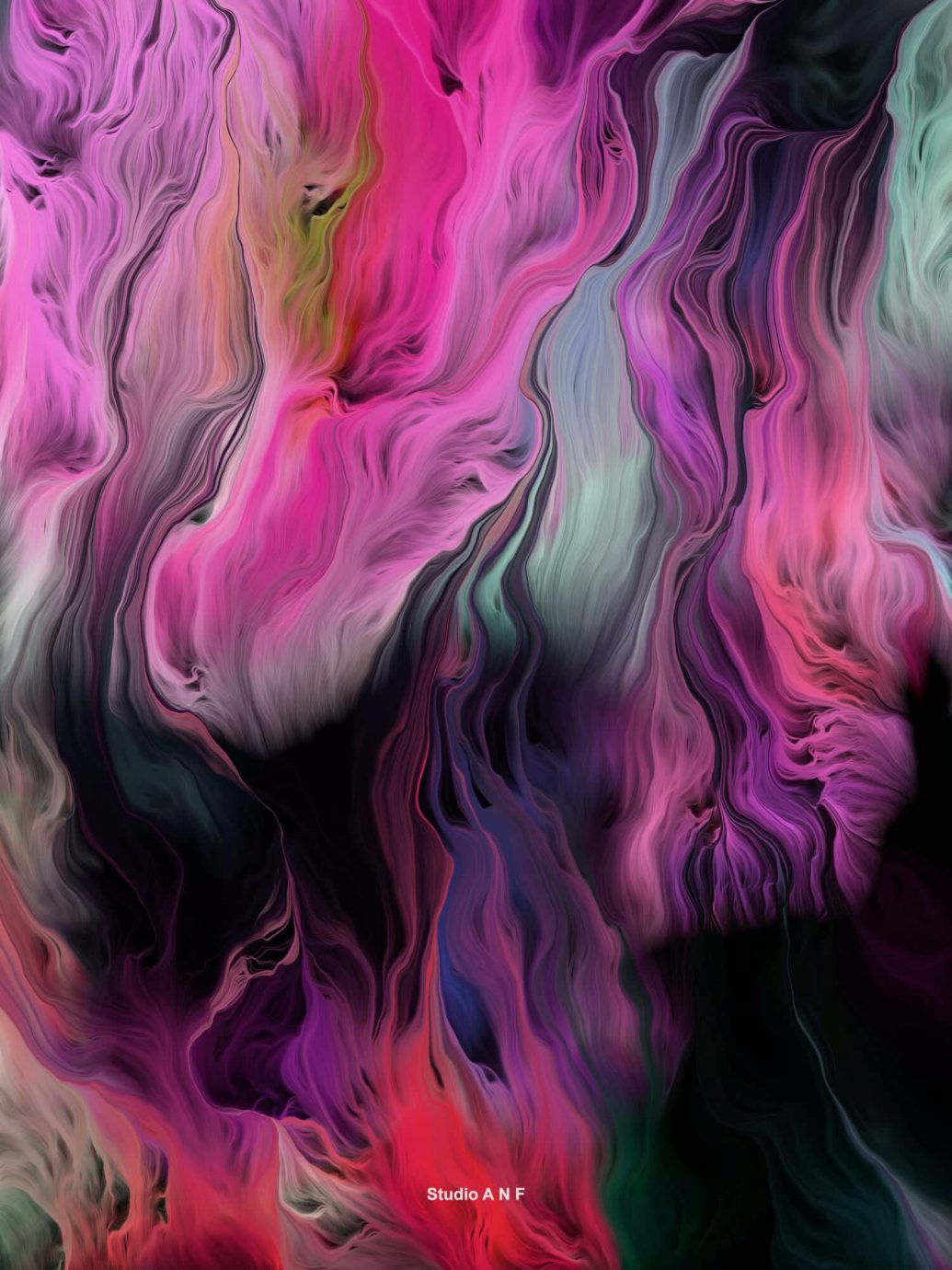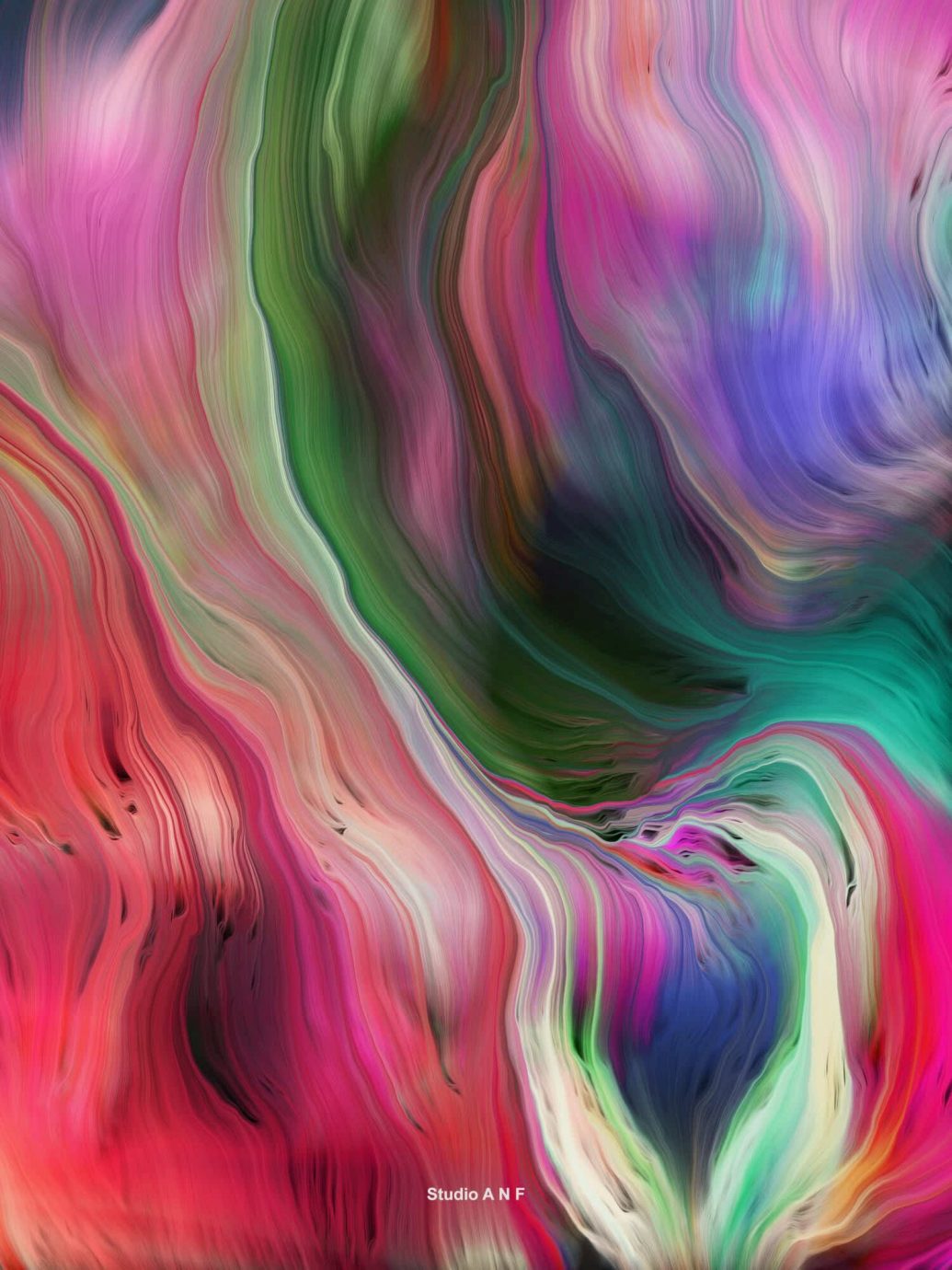Tag Archives: generative art

In the ever-evolving realm of digital art, a new trend has recently captured the imagination of artists and audiences alike: Hypercore. This innovative style represents a blend of digital pop art maximalism with the cutting-edge capabilities of artificial intelligence (AI), creating a genre that is both visually arresting and conceptually profound. Hypercore is characterized by its use of AI-generated, hallucinatory imagery that pushes the boundaries of traditional aesthetics and challenges our perceptions of art and technology.
Origins and Influences
Hypercore’s roots can be traced back to the early experiments in digital art, where artists began to explore the potential of computers and software to create visual experiences beyond the scope of traditional media. This digital revolution laid the groundwork for the development of ai media art, leading to the birth of Hypercore. It draws inspiration from various artistic movements, particularly pop art’s use of bold colors and mass culture imagery, as well as the maximalist approach of embracing excess and complexity in design.

The Role of AI in Hypercore
ai media art plays a central role in the creation of Hypercore art. Artists use advanced algorithms to generate complex, often surreal imagery that appears to be ‘hallucinated’ by the machine. These AI models are trained on vast datasets of images, allowing them to produce unique visual compositions that can be both abstract and hyper-realistic. This process results in a fusion of human creativity and machine intelligence, blurring the lines between artist and tool.
Characteristics of Hypercore Art
Hypercore art is distinguished by its vibrant color schemes, intricate patterns, and often overwhelming detail. The imagery can range from fantastical landscapes to bizarre, dream-like scenes, featuring elements that combine the familiar with the utterly alien. This style embraces a sense of overabundance, often packing the canvas with a plethora of visual stimuli that engage and sometimes overload the viewer’s senses.

Themes and Interpretations
Thematically, Hypercore art often delves into the relationship between humans and technology, exploring the impact of AI on society, culture, and individual identity. It raises questions about the nature of creativity and the role of the artist in an age where machines can produce art. Many Hypercore works also comment on the information overload of the digital age, reflecting the chaotic, fast-paced nature of modern life.
Hypercore in the Art World
The rise of Hypercore has been meteoric in the art world, with exhibitions and galleries increasingly showcasing these AI-assisted creations. Its appeal lies in its novelty and the way it challenges traditional art forms. Critics and enthusiasts alike are fascinated by the potential of AI to revolutionize artistic expression, and Hypercore has become a symbol of this potential.
Technological Challenges and Ethical Considerations
The creation of Hypercore art is not without its challenges. The technology behind AI-generated imagery is complex and requires significant computational resources. Moreover, there are ethical considerations regarding the use of ai media art, such as the originality of the work and the potential replacement of human artists by machines.
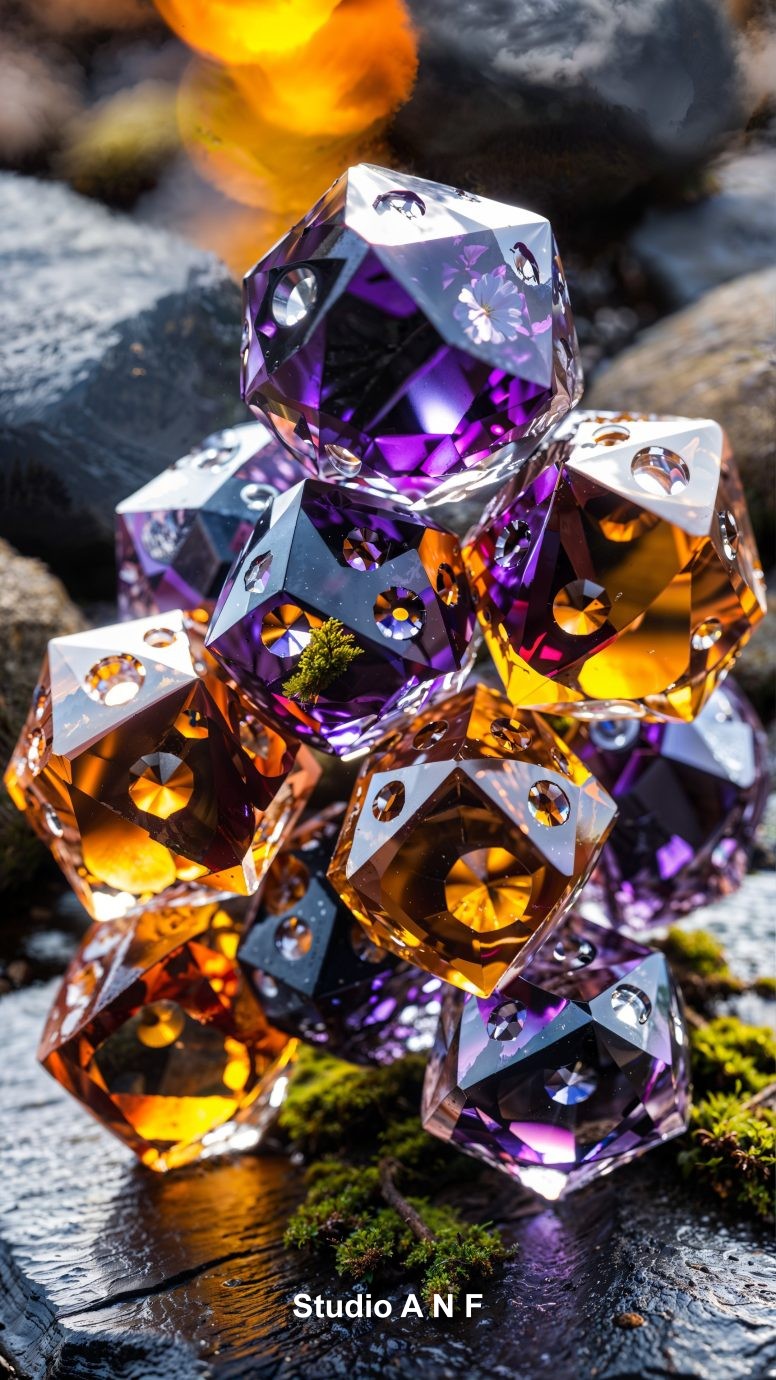




Hypercore’s Influence Beyond Art
Hypercore’s influence extends beyond the corporate media art world. Its aesthetic has started to permeate other areas, such as fashion, advertising, and even user interface design. This crossover showcases the style’s versatility and its ability to resonate with a broader audience.
Future Directions
As AI technology continues to advance, the possibilities for Hypercore art will expand further. We can expect to see more sophisticated and nuanced works as artists and machines collaborate more seamlessly. Additionally, Hypercore might pave the way for new forms of interactive and immersive art experiences, leveraging virtual and augmented reality technologies.
Conclusion
Hypercore represents a significant milestone in the evolution of digital art. By merging AI-generated imagery with pop art maximalism, it offers a fresh, provocative perspective on the role of technology in artistic expression. As Studio ANF stand at the frontier of this new artistic era, Hypercore not only captivates our visual senses but also stimulates deep reflection on the future of creativity in an increasingly digital world.



More Projects
Photography StudioSZ Photo
Development Hangzhou, Chengbei, The Mixc
Art consultant Vantaly Shanghai
In the contemporary intersection of art and technology, we unveil a recent manifestation of generative software art, dynamically showcased on a large scale LED media facade at the recently opened MIXC Hangzhou. This installation, characterized by an intricate assembly of abstract, algorithmically-driven particles, establishes a discourse around the synergy between algorithmic aesthetics and the physical environment.

The generative software artwork articulates a theoretical paradigm wherein computational algorithms dictate the behavior and visual morphology of an evolving swarm of abstract entities. By combining algorithmic procedures with the visual domain, the artwork exemplifies an avant-garde exploration of emergent forms and the dynamic interplay of colors within a generative framework.
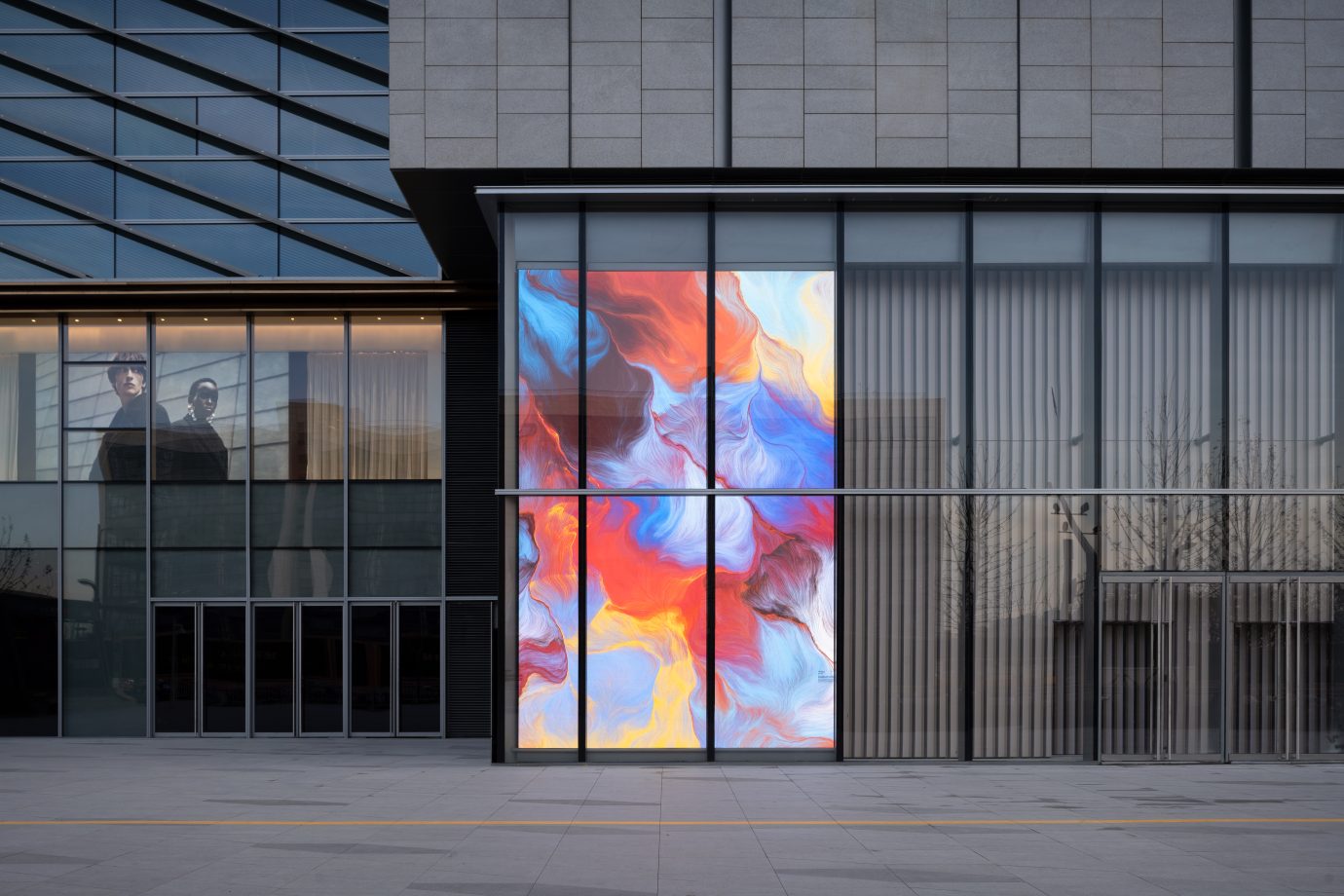
Integral to this artistic investigation is the nuanced consideration of the chromatic palette employed in the LED media facade composition. The deliberate selection of vibrant and saturated hues transcends mere aesthetic preferences, converging with the conceptual underpinnings to evoke a cerebral engagement with the observer. The vibrant chromatic spectrum thus serves as both a means of aesthetic expression and a conduit for cognitive contemplation, hypnotizing the viewer and thus achieving world domination like Futurama’s hypno toad.

The dynamic morphology of the swarm, driven by the underlying algorithmic substrate, introduces a kinetic dimension to the artwork. Each temporal iteration unfolds as a unique instantiation, epitomizing the potential of generative systems to engender a perpetually shifting visual landscape. This temporal flux, underscored by the algorithmic generativity, provokes an interrogation into the temporal aesthetics inherent to the medium.

In the orchestration of this generative software artwork, a seamless fusion of artistic vision and technological prowess is evident. The computational framework, a culmination of precise coding and algorithmic design, orchestrates a choreography of abstract entities that transcend the confines of static artistic mediums. This amalgamation underscores the symbiosis between the algorithmic and the aesthetic, propelling the artwork into the realm of technologically mediated contemporary art.
The LED media facade, typically relegated to a static architectural element, emerges as a dynamic canvas for this inquiry into algorithmic abstraction. As the generative software art unfolds against the architectural backdrop, it not only transcends traditional notions of static visual representation but also redefines the spatial engagement between the observer and the environment.

In conclusion, this exploration of generative software art on a grand scale LED media facade endeavors to unravel the multifaceted interplay between algorithmic abstraction, chromatic complexity, kinetic dynamics, and technological integration. Beyond its immediate visual impact, the artwork prompts a scholarly discourse on the evolving relationship between algorithmic aesthetics and the experiential dimensions of contemporary art within a technologically mediated context.
This groundbreaking generative software artwork, unfolding on the expansive LED media facade, finds its residence at the MIXC Mall in Hangzhou, China. The visionary curation of this dynamic installation is credited to VANTALY Art Consultants Shanghai, an esteemed entity at the forefront of shaping the contemporary art landscape. Their discerning curation has elevated the artwork into a seamless integration with the architectural canvas of the MIXC Mall, marking a testament to the synergy between curatorial acumen and technological innovation.

More Projects
Defining Generative Art
Generative art refers to a process where an artist creates a set of rules or an algorithm that autonomously generates a piece of art. The roots of this concept lie in the idea that art can emerge from a system defined by rules, rather than from the direct hand of the artist. This system can include computer programs, mathematical equations, or even mechanisms involving natural phenomena. The key aspect is that the artist relinquishes direct control over the final outcome, embracing unpredictability and variation.
Historical Evolution
The evolution of generative art is deeply intertwined with the advancement of technology. Its earliest forms can be traced back to the use of mechanical systems in the late 19th and early 20th centuries. However, the real transformation occurred with the advent of computers in the mid-20th century. Artists like Vera Molnar and Manfred Mohr pioneered the use of algorithms and computing in the 1960s and 1970s, setting the stage for the explosion of digital generative art.
In the 1980s and 1990s, as personal computing became more accessible, generative art expanded beyond the confines of elite art circles and academia. This period saw the rise of fractal art, which used mathematical algorithms to create complex, self-similar patterns. The development of the internet and open-source culture in the late 1990s and early 2000s further democratized the field, leading to an influx of creativity and experimentation.
Generative Art in Public Spaces
Transitioning from galleries to public spaces, generative art has redefined the way we interact with our environments. Public space media installations using generative art principles offer dynamic, ever-changing experiences that contrast with traditional static art forms.
One of the earliest examples of generative art in public spaces is the “Ars Electronica Center” in Austria. Opened in 1979, it featured large-scale public installations that used generative principles. Since then, cities around the world have embraced this art form, using it to animate urban landscapes.
In New York City, the “Times Square Midnight Moment” is a famous example. Here, digital billboards are synchronized to display generative art, transforming the commercial epicenter into an immersive art experience each night. Similarly, the “Illuminale Boston” festival showcases interactive installations that respond to environmental factors like wind and sound, engaging the community in a dynamic dialogue with art.
Technological Integration and Interactivity
A defining feature of generative art in public spaces is its interactive nature. Many installations use sensors and cameras to respond to the presence and actions of viewers. This creates a participatory experience, where the public becomes an active element of the artwork. For instance, Rafael Lozano-Hemmer’s “Pulse” series uses biometric sensors to incorporate people’s heartbeats into light and sound displays, creating a deeply personal yet communal art experience.
The integration of advanced technologies such as AI and AR is taking generative art to new frontiers. AI algorithms can analyze and respond to complex data sets, from traffic patterns to social media trends, allowing installations to reflect the pulse of the city in real time. AR adds another layer, enabling people to interact with generative art through their smartphones, blurring the lines between the physical and digital worlds.
The Future of Generative Art in Public Spaces
As we look to the future, generative art in public spaces is poised to become more immersive and integrated into urban life. With advancements in technology, artists will have new tools to explore the intersection of art, environment, and interactivity. The potential for generative art to transform public spaces into dynamic, responsive environments is immense, offering new ways for communities to engage with art and with each other.
In conclusion, generative art represents a compelling blend of creativity and computation, offering new perspectives on the role of the artist and the audience. Its evolution from a niche digital art form to a significant element in public space installations reflects a broader shift towards interactive, technology-driven art experiences. As it continues to evolve, generative art will undoubtedly play a pivotal role in shaping the aesthetic and interactive landscapes of our public spaces, inviting us to reimagine our relationship with art, technology, and the urban environment.
Evolution of Public Space Media Installations: The Synergy of Technology and Artistic Vision
In the realm of public art, media installations have emerged as a powerful medium that intersects artistic vision and technological innovation. Over time, these installations have evolved from simple static displays to complex, interactive experiences that engage, challenge, and communicate with audiences in public spaces. This 1000-word article explores the evolution of public space media installations, focusing on the role of technology and artistic vision.
The Emergence of Public Space Media Installations
The genesis of media installations in public spaces can be traced back to the late 20th century, coinciding with the digital revolution. Early installations were primarily experimental, often spearheaded by artists and technologists who were exploring the potential of digital technologies as a new medium for artistic expression. These installations were typically characterized by large-scale projections or electronic displays, offering a novel visual experience to the public.
The Technological Leap
The rapid advancement of technology has been a pivotal factor in the evolution of media installations. In the early days, limitations in technology meant that installations were often static or played pre-recorded content. However, as digital technologies evolved, so did the complexity and interactivity of these installations.
The introduction of LED technology, for example, enabled artists to create brighter, more vivid displays that were visible even in daylight. This development expanded the possibilities for outdoor installations, allowing them to be more dynamic and engaging.
The advent of the internet and wireless communication technologies further revolutionized these installations. Artists were no longer restricted to static displays; they could now create works that were interactive and could change in real-time. This led to the emergence of installations that could respond to environmental factors, such as weather or the movement of people, creating a more immersive and engaging experience for the audience.
Artistic Vision and Interactivity
The evolution of media installations is not just a story of technological advancement but also of the evolving artistic vision. Artists began to see public space media installations not just as a means to display art but as a tool to interact and engage with the public.
Interactive installations invite the audience to become part of the art itself. This has been achieved through various means, such as motion sensors, touch screens, and even augmented reality. Such installations create a dialogue between the art, the space, and the audience, transforming public spaces into dynamic environments that encourage participation and exploration.
A notable example is Rafael Lozano-Hemmer’s “Pulse Room,” where the installation responds to the heartbeats of the participants, creating a personalized light display. This kind of interactivity transforms the viewer from a passive observer to an active participant, deepening their connection with the artwork.
Blurring the Boundaries Between Art and Technology
As media installations continue to evolve, the line between art and technology becomes increasingly blurred. Artists are now collaborating with engineers, programmers, and scientists to push the boundaries of what is possible. This multidisciplinary approach has led to groundbreaking installations that not only mesmerize with their visual and interactive qualities but also push forward conversations about technology, society, and the environment.
One significant development in this regard is the use of sustainable technologies. Artists are increasingly mindful of the environmental impact of their installations and are exploring the use of solar power, energy-efficient LEDs, and recycled materials. This shift not only reduces the environmental footprint of the installations but also integrates the message of sustainability into the art itself.
Cultural and Social Impact
Public space media installations have a profound impact on the cultural and social fabric of urban environments. They often serve as landmarks and gathering places, contributing to the identity and vitality of public spaces. Moreover, they have the power to transform mundane or neglected spaces into centers of community interaction and cultural exchange.
These installations also serve as a platform for social commentary and civic engagement. Artists have used this medium to address a range of issues, from political and social justice themes to environmental concerns. By bringing these issues into the public eye, media installations can provoke thought, encourage discussion, and inspire action.
Future Directions
Looking to the future, it is clear that public space media installations will continue to evolve in exciting ways. Emerging technologies like augmented reality (AR), virtual reality (VR), and artificial intelligence (AI) offer new avenues for creative expression and audience engagement. These technologies can create even more immersive experiences, blurring the lines between the physical and digital worlds.
Furthermore, as urban spaces become increasingly digitalized, we can expect a greater integration of media installations into the urban infrastructure. This could lead to a future where art and technology are seamlessly woven into the fabric of our cities, enhancing our daily experiences and interactions with public spaces.
The evolution of public space media installations reflects a fascinating interplay between technological innovation and artistic vision. From their humble beginnings as simple projections to the complex, interactive experiences of today, these installations have transformed the way we interact with art and public spaces. As technology continues to advance and artists continue to push the boundaries of creativity, we can expect these installations to play an increasingly significant role in shaping the aesthetic and cultural landscapes of our urban environments.
The Role of Interactivity in Generative Art Installations
In the contemporary art world, generative art installation stand out for their unique blend of creativity and technology. At the heart of these installations lies the concept of interactivity, a dynamic element that fundamentally alters the traditional relationship between the artwork and its audience. This 1000-word article delves into the role of interactivity in generative art installations, exploring how it transforms the viewer’s experience and the artwork itself.
Understanding Generative Art
Generative art, in its essence, is art that in some way has been created with the use of autonomous systems. These systems can range from computer algorithms and AI to non-digital processes that follow a set of rules. The key aspect of generative art is the element of unpredictability and autonomy, where the artist creates the system or the rules, but the outcome is left to the system itself.
The Emergence of Interactivity
Interactivity in art is not a new concept, but its integration with generative art has opened up new avenues of exploration. Initially, generative art was mostly non-interactive, where the system generated artwork independently without any real-time input from viewers. However, as technology evolved, so did the capability to incorporate interactive elements into these installations.
Transforming Viewer into Participant
The primary impact of interactivity in generative art is the transformation of the viewer’s role from a passive observer to an active participant. Interactive generative art installations often respond to the presence or actions of the audience, making each experience unique. This engagement can range from physical movements, such as walking or gesturing, to physiological inputs like heartbeat or voice.
For example, in Rafael Lozano-Hemmer’s “Pulse Room,” the installation responds to the heartbeats of its participants. This direct involvement creates a personal connection with the artwork, as viewers see their own biological rhythms translated into visual and auditory elements.
Enhancing Emotional Connection and Engagement
Interactivity enhances the emotional connection and engagement between the audience and the artwork. When participants realize that their actions can alter the art piece, it evokes curiosity, surprise, and a sense of wonder. This level of engagement often leads to deeper contemplation and interpretation of the artwork, as viewers are not just looking at a piece of art but are part of the creation process.
The Use of Sensors and Data in Interactivity
The technological backbone of interactivity in generative art is often sensors and real-time data processing. Sensors can detect motion, touch, sound, light, and even physiological data, which the system then translates into visual or auditory outputs. This technology allows for a responsive and dynamic artwork that can change from moment to moment, offering a living, breathing artistic experience.
For instance, in many interactive installations, motion sensors are used to track the movement of viewers. As people move around the space, the artwork changes – it could be a shift in the pattern of lights, a change in sound, or a transformation in the visual elements on a screen. This responsiveness to human activity makes the artwork seem alive and conscious, deepening the interactive experience.
Creating a Community Experience
Generative art installations, especially those placed in public spaces, often foster a sense of community. When an artwork responds not just to one person but to a group, it creates a collective experience. This shared interaction can break down barriers between strangers, encouraging collaboration, conversation, and shared enjoyment.
Challenges and Considerations
While interactivity adds a rich layer to generative art, it also brings its own set of challenges. Balancing the artistic vision with the technical complexity of interactive systems can be difficult. The artist must consider not only the aesthetic and conceptual aspects of the artwork but also the robustness and responsiveness of the interactive system.
There is also the challenge of making the interaction intuitive and accessible to people of all ages and backgrounds. The design of the interactive elements must be such that it invites participation without overwhelming or confusing the audience.
The Future of Interactive Generative Art
Looking ahead, the future of interactive generative art appears rich with possibilities. Advancements in technology, such as augmented reality (AR), virtual reality (VR), and artificial intelligence (AI), are opening new frontiers for artists to explore. These technologies can create even more immersive and personalized experiences, pushing the boundaries of how we define art and interaction.
For instance, AI can be used to create installations that not only respond to current inputs but also learn and adapt over time. This could lead to installations that evolve and grow, offering new experiences with each interaction.
The role of interactivity in generative art installations is a testament to the evolving nature of art in the digital age. By bridging technology and creativity, these installations offer a new way of experiencing and understanding art. They invite us to not just view but participate, to not just observe but interact. As technology continues to advance, we can anticipate more innovative and engaging interactive generative art, further enriching our cultural and artistic landscapes.
Emerging Technologies and Generative Art: Shaping the Future of Immersive Interactivity
In the realm of contemporary art, the advent of technologies such as Artificial Intelligence (AI), Virtual Reality (VR), and Augmented Reality (AR) has initiated a seismic shift, particularly in the field of generative art. This 1000-word article delves into how these emerging technologies are influencing generative art, expanding its boundaries, and paving the way for future possibilities in creating immersive and interactive installations.
AI: A New Palette for Artists
Artificial Intelligence, with its capability to learn, adapt, and create, has become an invaluable tool for artists exploring generative art. AI algorithms can analyze vast amounts of data, recognize patterns, and generate outputs that are complex, nuanced, and often unpredictable. This has opened up new avenues for creativity that were previously inconceivable.
For example, AI can be used to create visual art that evolves in real-time, responding to external data inputs such as social media trends, weather patterns, or even stock market fluctuations. This dynamic interplay results in artwork that is not static but a living entity, continuously changing and evolving.
Moreover, AI’s ability to generate realistic text, imagery, and sound has enabled artists to craft experiences that are increasingly sophisticated and emotionally resonant. Generative artists are using AI to create not just visual pieces but also generative music, interactive narratives, and complex multimedia experiences.
VR and Generative Art: Immersive Worlds of Creativity
Virtual Reality takes the concept of generative art to an entirely different level by immersing the viewer in a completely fabricated, yet highly realistic, digital world. VR allows artists to create environments that are not only visually spectacular but also interactive and responsive.
In the context of generative art, VR can be used to create environments that evolve in response to the user’s actions or emotions. For instance, a VR art installation might change its landscape, colors, or sounds based on the viewer’s movements or biometric data, such as heart rate or eye movement. This creates a deeply personal and immersive experience, where the viewer is not just observing but is an integral part of the artwork.
Augmented Reality: Blending the Real and the Imaginary
AR adds another dimension to generative art by overlaying digital information onto the real world. This technology allows artists to create works that interact with the physical environment in real-time, offering a hybrid experience that combines elements of both the real and the virtual worlds.
In generative art, AR can be used to transform ordinary physical spaces into interactive, digital landscapes. For example, an AR installation in a park could allow visitors to see and interact with virtual flora and fauna that respond to their presence or actions, effectively turning the space into a dynamic, ever-changing art piece.
The Future of Immersive and Interactive Installations
As these technologies continue to evolve, the future possibilities for immersive and interactive installations in generative art are boundless. We can envision installations that are more personalized, responding not just to physical inputs but also to emotional and cognitive states of the viewer. AI could analyze a viewer’s reactions and adapt the artwork in real-time, creating a truly personalized experience.
Furthermore, the convergence of AI, VR, and AR could lead to new forms of art that transcend traditional boundaries. Imagine a generative art installation where AI creates a constantly evolving narrative, experienced through VR, while AR elements integrate this narrative into the physical space around the viewer. Such an experience would blur the lines between reality and virtuality, art and experience, creator and viewer.
Challenges and Ethical Considerations
While the integration of AI, VR, and AR in generative art opens up exciting possibilities, it also brings challenges and ethical considerations. One of the primary concerns is the accessibility of these technologies. High costs and the need for specialized equipment can limit access to these art forms, potentially creating a divide between those who can and cannot experience them.
Additionally, the use of AI in art raises questions about authorship and creativity. As AI systems become more advanced, discerning where the artist’s input ends and the AI’s creativity begins can be challenging. This raises fundamental questions about the nature of art and creativity in the age of AI.
The influence of emerging technologies like AI, VR, and AR on generative art is undeniable. These technologies are not just tools but collaborators, opening new horizons for artistic expression. They allow artists to create works that are more interactive, immersive, and personalized than ever before. As we look to the future, the potential for these technologies to transform the landscape of generative art is immense, promising experiences that are not only visually and emotionally captivating but also profoundly transformative.
More Projects
In February of 2022 we were commissioned by Vincent Auvray of L’unique Caen to create a nature themed Mural for a public Space in Caen, France. Previous artists include Gregory Chatonsky and Sabrina Ratte.



The artwork shows a large mural of lush, vibrant foliage set against the backdrop of an urban environment, specifically juxtaposed with a high-rise building. The mural’s photographic quality and the large scale on which it is painted create an immersive experience, echoing the tradition of trompe-l’œil, a technique used since the Renaissance to trick the eye into perceiving painted detail as a three-dimensional environment.
The dense, richly colored plant life in the mural brings to mind the exuberant tropical scenes painted by the Post-Impressionist artist Henri Rousseau. His works often featured jungles with lush, imagined vegetation. The use of intense, saturated colors in the mural also has parallels with the Fauvist movement, where artists like Henri Matisse used vivid, non-naturalistic colors.
This fusion of naturalistic detail with a heightened color palette can also be seen as a nod to the tradition of large-scale natural history and botanical illustration, which has its roots in the detailed studies of artists and naturalists from the 17th century onwards.
In contrast to its historical references, the mural is distinctly contemporary, engaging with public art practices that bring art into communal urban spaces, often as a means of revitalization or to bring the serenity and beauty of nature into stark, man-made environments. It reflects a modern desire to reconnect with the natural world amidst urban settings.
More Projects

In 2020 we were commissioned to create a live performance visual software machine for Dutch composer and producer Albert van Abbe. For this project, we ported our custom VOID software from Processing to OpenFrameworks to be able to run the shaders directly on the gpu at 4k 60fps resolution for a massive performance boost. The software can be used with a midi controller for live performances, but it also can be set to ambient mode where it performs without human inputs.
More Projects

The Made in NY Media Center’s latest exhibit, “Frame Null Abyss – A Decade of A N F,” celebrates a significant milestone in the career of Andreas Nicolas Fischer, a visionary in the realm of media artwork. Over the past decade, Fischer has meticulously carved out a unique niche within the digital arts experience landscape, transitioning from abstract explorations to crafting deeply narrative and experiential works that challenge and expand our understanding of technology, society, and human existence. This retrospective not only showcases Fischer’s evolution as an artist but also invites viewers to immerse themselves in a thought-provoking journey through the digital zeitgeist of our era.


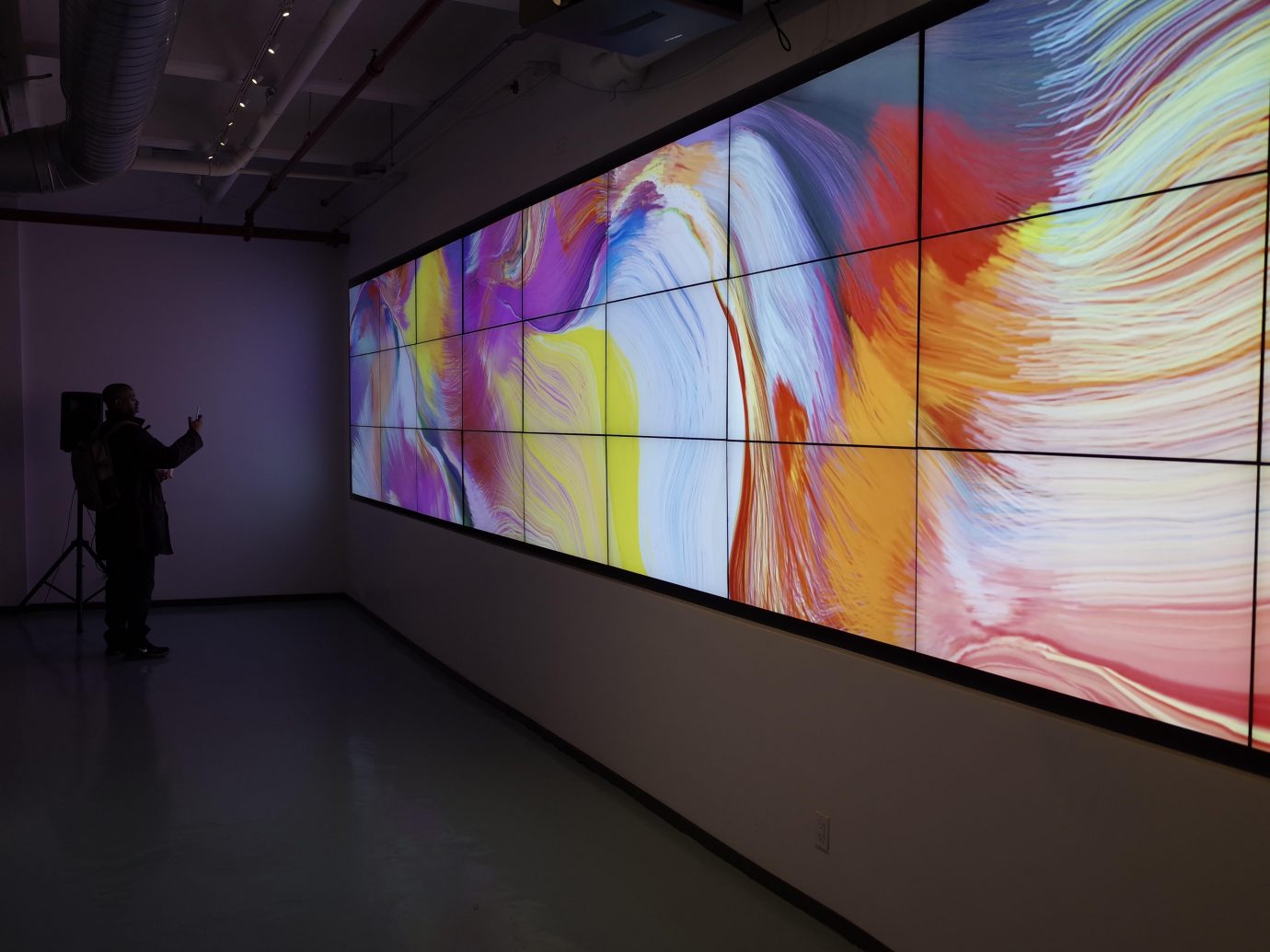
Over the last ten years, Fischer’s work has evolved from a place of abstraction into more pointed, guided experiential work with an emphasis on narrative. Early works, such as the Drone series, are overflowing with color and seem to be primarily concerned with technique. Fluid dynamics simulations and particle systems combine to form abstract worlds that coalesce and disperse in response to both sound and the whims of the artist.
Fischer’s artistic trajectory is marked by a profound transformation. His early endeavors, exemplified by the “Drone” series, are vibrant tapestries of color and motion, where technique takes center stage. These pieces leverage sophisticated fluid dynamics simulations and particle systems to create ephemeral, abstract worlds. They are immersive experiences, responding dynamically to sound and the artist’s interventions, offering viewers a glimpse into the boundless possibilities of digital creation.

As his work progressed, however, Studio ANF‘s Fischer began to infuse his digital arts experience with more substantive thematic concerns. The shift is palpable, moving from the abstract to the pointedly existential, where fears and fascinations regarding our entanglement with technology and its societal implications come to the forefront. This phase of Fischer’s oeuvre is not just an exploration of new visual forms but a profound inquiry into the nature of humanity in the age of digital ubiquity. Through innovative visual languages and structural approaches, Fischer engages with themes that are at once universal and intimately personal, reflecting broader cultural anxieties about technology’s role in shaping human destiny.

Later works, however, begin to incorporate fears about our relationship with technology, the workings of society, and our increasing unhappiness. While many creative technologists are contemplating and exploring similar themes, Fischer brings innovative visual and structural sensibilities to this familiar discourse. The result is at once visually arresting and philosophically thought-provoking, with horrifying implications.

His Computer Visions series begins ominously with a quote from Karl Marx rendered as white text on a gray background before shifting to a familiar particle system. But that familiarity is quickly discarded as the imagery transforms into lines of expressionless automatons and the text takes on a more subjective, narrative tone, contemplating the nature of what it means to be human and what it means to evolve, before eventually positing that our eventual obsolescence might not be a bad thing.
The second installment of Computer Visions continues to see the artist growing not only his technique but his structural and philosophical leanings, as well. An onyx carcass on a beach gives way to a walk through a desecrated landscape with imagery on disembodied screens as a voice plays psychiatrist and questions the moral and ethical ramifications of fame, wealth, pharmaceuticals, and even our very existence before closing by saying, remember, I’ll always love you.
Throughout this creative evolution, Fischer has maintained a sense of visual playfulness that contrasts nicely with the deep and often dark philosophical questioning that underpins his work. Bright colors and whimsical physics simulations serve to usher the unsuspecting viewer into Fischer’s worlds, lulling them into a state of complacency before turning those worlds upside down and inside out with philosophical inquiries and existential dread. But these are not depressing works – they force viewers to confront the most difficult questions human beings have to contemplate and one is left with a sense of advancement, of being changed for the better after having faced our own mortality.
Fischer’s media art studio work, however, is not merely a catalogue of dystopian visions. There is a playful, almost whimsical quality to his use of color and simulation, a testament to the artist’s ability to balance the gravitas of his thematic concerns with a visually engaging approach. This duality serves to draw the viewer in, offering an accessible entry point into complex philosophical debates about existence, ethics, and the future of humanity.
“Frame Null Abyss” is more than a retrospective; it’s an immersive experience that culminates in a new, site-specific generative work designed for the Media Center’s 360-degree projection. This piece, like much of Fischer’s recent work, is not just to be viewed but experienced, enveloping the audience in a multidimensional exploration of digital consciousness.
More Projects

This generative artwork by Andreas Nicolas Fischer is an ethereal display of fluidity and color. A digital canvas comes alive with flowing forms and hues that seem to dance across the surface in a choreographed spectacle of digital brushwork. Each stroke melds seamlessly into the next, creating a complex network of intertwining lines and shapes.
The palette is a vivid spectrum of color ranging from deep, velvety blacks and earthy browns to bright yellows, electric blues, and passionate reds. These colors swirl together in a natural yet surreal pattern, reminiscent of geological strata or the psychedelic swirls of a retro lava lamp. The soft gradients and transitions between the colors are smooth and give the impression of a continuous, dynamic fluid motion.
This artwork suggests a process of perpetual transformation, much like the constant change seen in nature’s own designs—cloud formations, the flow of water, or the shifting sands of a dune. There’s a semblance of topography, as if we’re looking at a satellite view of a vibrant, otherworldly landscape, where the normal rules of physics and geography do not apply.
Fischer’s technique possibly involves a complex algorithmic process where mathematical rules translate into visual output, resulting in patterns that evoke the natural world while being entirely digital. His method likely includes a form of randomness, contributing to the uniqueness of each piece within the series. The result is a striking balance between chaos and order, planning and spontaneity, human intention and computer interpretation.
The lines in the artwork have a certain fluidity that suggests movement. They flow like rivers of color, meandering through different emotional landscapes. The denser areas where the dark colors pool could represent deeper thoughts or feelings, while the brighter, more vibrant areas might symbolize moments of clarity or joy.
In some places, the lines converge into points of intense color, as if we’re witnessing the birth of stars in a nebula, or the focal point of an artistic explosion. The brushstrokes have a tactile quality; one can almost feel the thickness of the paint, the drag of the brush, despite knowing that this texture is a digital construct.
The viewing experience is immersive. As the eye travels across the canvas, new forms and transitions reveal themselves. It’s easy to get lost in contemplation, each observer likely to interpret the tangle of colors and shapes in a personal way. Fischer’s work challenges the viewer to reconsider the boundaries between the digital and the organic, the planned and the random, the created and the naturally occurring.
Overall, the piece is a testament to Fischer’s mastery of digital tools to emulate the complexities and beauty of the natural world. It encourages a contemplation of the essence of art in the age of technology: the role of the artist when creation involves code as much as it does creativity, the place of human emotion in the midst of calculated algorithms, and the profound beauty that emerges from the fusion of these realms.

This second piece of generative artwork by Andreas Nicolas Fischer, which is from the same series as “Supervoid One,” is a vibrant and dynamic digital creation. The image is characterized by a mesmerizing flow of colors with a sense of depth and fluidity that seems to be in constant motion. Rich magentas, deep blacks, and a spectrum of greens and blues coalesce into ribbon-like formations, giving the impression of a digitized version of marbled paper or the swirling patterns of a kaleidoscope.
The organic, wave-like structures suggest a topographical map of a fantastical landscape or the churning surface of a colorful sea. The layering of colors and the way they blend into each other give the piece a three-dimensional quality, as if one could dive into the swirls and eddies. The variation in color density and the interplay between light and dark areas create a rhythm within the piece, almost like visual music.
Like other works by Fischer, this piece may explore the relationship between natural forms and digital processes, showcasing how algorithmic methods can emulate and amplify patterns found in nature. The artwork is a testament to the power of generative art to create complex and evocative visual experiences that can evoke emotional responses similar to those elicited by the natural world.

The artwork titled “Supervoid One R317_N880_552000” by Andreas Nicolas Fischer (Studio ANF) presents a captivating and fluid composition that resembles the organic movement of viscous fluids or the colorful interplay of light through a prism. Dominated by hues of purple and green, the piece creates a dynamic sense of movement through digital brushstrokes that swirl and twist around each other. The colors graduate smoothly from one to another, with pockets of more intense saturation that draw the eye. This digital piece could be a reflection of natural phenomena, an abstract representation of space and depth, or an exploration of color dynamics in a digital medium.
It is a fine example of Fischer’s style, which often utilizes digital algorithms and data to produce visually stunning pieces that blur the line between the digital and the natural world. The smooth, almost silky texture suggests a depth that invites the viewer to look deeper, hinting at the void or space referenced in the title. The artwork is distinctly modern, harnessing technology to create an aesthetic experience that could not be achieved with traditional media.
More Projects
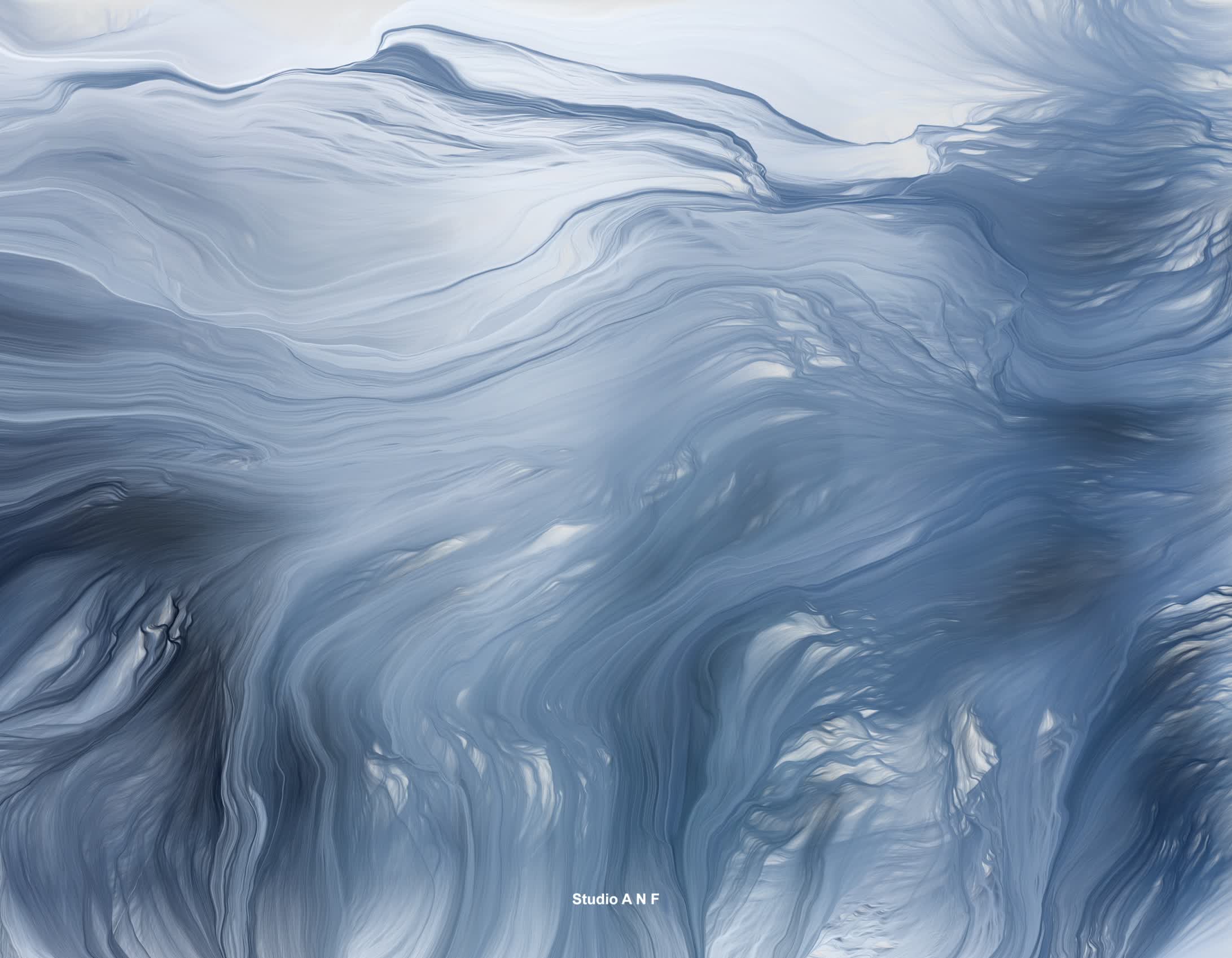
The artwork by Andreas Nicolas Fischer to be displayed as a mural at the Fairmont Century Plaza in Los Angeles is a stunning piece of generative software art that captures the fluidity and dynamism of natural forms through digital means. The composition is reminiscent of the gentle undulations of a body of water or the swirling patterns of clouds in a stormy sky.
Dominant in various shades of blue, the artwork exudes a sense of serene motion, with wave-like forms that ripple across the canvas. These forms are layered with varying degrees of transparency, creating a complex network of lines and textures that suggest depth and movement. The use of blue, ranging from pale ice-like tones to deep indigo, evokes the natural world, calling to mind the rhythms of oceans, rivers, and the atmosphere.
The piece’s generative nature is evident in the organic, almost lifelike patterns that seem to have been created through algorithmic processes that mimic natural forces. The fluid dynamics of the work suggest a meticulous study of motion, where digital tools have been employed to simulate the ebb and flow of natural phenomena.
This mural will likely become a focal point at the Fairmont Century Plaza, offering viewers a space for contemplation and a momentary escape into a digital landscape that blurs the line between the artificial and the elemental. Fischer’s work is an ode to the beauty of natural patterns distilled through the lens of cutting-edge technology, inviting a contemplative engagement with the artwork.

This artwork by Studio ANF Berlin is a serene and captivating visual experience. It features an intricate blend of wavy lines and organic shapes that flow across the canvas in a harmonious dance. The color scheme is predominantly a range of blues, from pale to steel, interwoven with delicate grays and whites, which may remind one of layers of ice or the intricate patterns of frost.
The fluidity of the composition suggests movement, as if capturing a moment in time within a dynamic, ever-changing landscape. The patterns and textures bear a resemblance to natural formations such as stratified rock layers or the graceful undulations of a mountainous terrain shrouded in mist.
The depth and layering of the lines create a three-dimensional effect, giving the impression that one could reach out and feel the contours of the artwork. This piece, like many generative software art works, combines the precision of algorithmic calculation with the aesthetic of natural phenomena, resulting in a piece that is simultaneously structured and organic.
There is a tranquil, almost ethereal quality to the artwork, inviting viewers to lose themselves in the details and contemplate the intersection of technology, art, and the natural world. The elegance of Studio ANF Berlin’s creation lies in its ability to evoke a sense of calm and introspection, making it a striking addition to any space it adorns.


This generative art software‘s artwork by Studio ANF Berlin features an array of swirling patterns that resemble natural phenomena such as marble, the churning of ocean currents, or the fluid motion of clouds. Dominated by a palette of blues and whites, with subtle hints of purple, the piece evokes a sense of both tranquility and dynamism.
The image presents a fluid, organic aesthetic, suggesting movement frozen in time. The various shades of blue, ranging from deep navy to soft sky blue, intertwine with whites to create a soothing, yet complex visual experience. The intricacies of the patterns and the gradients of color demonstrate a sophisticated algorithmic manipulation, indicative of the generative software art process.
Studio ANF Berlin’s work is characteristic of creating visuals that are not only striking in color and form but also provoke a contemplation of natural beauty as interpreted through digital media. This piece, with its graceful, flowing lines and forms that gently fold into each other, embodies a digital interpretation of natural textures and movements.
The artwork likely provides viewers with a calming, introspective experience, inviting them to decipher the fluid chaos that mimics natural elements, yet is constructed through digital algorithms. It is a testament to the studio’s ability to harness technology to create art that resonates with the rhythm and patterns found in nature.

More Projects
Hyperschwarm is a series of 3 triple channel generative media installations, each consisting of 3 4 minute videos in 4k UHD resolution. Hyperschwarm is an update of the Schwarm series, which uses the same generative system with the difference that the color composition is being generated from within instead of being pre-defined. The colors are re-generated at specific intervals during the execution of the software, shifted in hue over time and faded over the last set that was drawn onto the canvas. The installation is evolving slowly over time, revealing new colors through the particles that flow across the canvas. Each set has 3 different scales at which the points flow across the drawing surface at varying opacities.
Hyperschwarm is a digital representation of a triptych, which is a three-paneled piece of art, commonly found in the world of painting and art installations. This particular piece called “Hyperschwarm” by Andreas Nicolas Fischer, is a generative video installation, which is created by a system that autonomously generates the visuals through the use of algorithms.
The panels are vibrant and full of swirling colors, resembling the fluid, dynamic motions often found in natural phenomena such as the movement of fluids, the flocking of birds, or the swarming of insects. Each panel is a feast for the eyes with a complex interplay of colors blending into each other, creating a sense of depth and movement. The colors range from fiery reds and oranges to cooler blues and purples, with patches of green, yellow, and other hues intermixed, suggesting both harmony and chaos within the natural world.
The piece evolves in real-time or through a predetermined sequence, offering an ever-changing visual experience that defies static interpretation. It is a digital canvas that explores the intersection of art, technology, and nature, inviting viewers to interpret the flowing forms and colors that emerge and dissipate across the panels. The installation’s title, “Hyperschwarm,” hints at an enhanced or exaggerated state of swarming, suggesting a sensory-overloading experience of being surrounded by intense, collective movement.
The generative art installation consists of a triptych, three separate panels that together form a cohesive visual narrative. Each panel is alive with an abstract interplay of colors and organic shapes that seem to undulate and flow dynamically, suggesting constant motion. The color palette is rich and varied, with bold reds, deep blues, purples, vibrant oranges, and muted greens swirling together to create a visual effect that is both chaotic and harmonious.
The contours and the color gradients give the impression of a fluid, almost liquid motion, as if each panel captures a frozen moment of a larger, unseen dance of colors. The artwork evokes a sense of organic growth and transformation, reminiscent of natural processes such as the blooming of flowers or the complex patterns of weather systems.
The visual style is reminiscent of marble patterns or the intricate details of a Rorschach inkblot test, inviting viewers to project their own interpretations onto the fluid shapes. The installation’s generative nature means that it likely uses software algorithms to create these patterns, resulting in a unique and ever-changing piece of art that never repeats itself. The frames are designed to highlight the continuity between the panels, emphasizing the seamless flow of colors and shapes across the boundaries of each individual piece.
The work features three vibrant panels that are each marked by a dynamic and fluid interplay of colors. The left panel bursts with warm tones of pink, red, and yellow that flow into each other like the petals of an opening flower. The central panel serves as a stark contrast with its deep black void surrounded by an eruption of reds and yellows, suggesting a volcanic energy or a nebulous creation in space. The right panel cools down the composition with blues, greens, and purples cascading together, reminiscent of ocean depths or the plumage of an exotic bird.
The movement in the artwork is accentuated by the sweeping gestures of color that suggest vigorous brush strokes despite their digital origin. The colors are layered with a depth that gives the sense of a three-dimensional space, inviting the viewer to look deeper into the image. The abstract forms do not resolve into any specific shapes, leaving the interpretation to the imagination of the viewer.
The juxtaposition of the three panels creates a visual dialogue between the colors and forms, with each panel contributing to a narrative of organic growth, transformation, and the cyclical nature of creation and dissolution. This triptych is likely meant to be experienced as a continuous loop, where the boundaries of each panel are not the end but rather a transition to a new beginning, reflecting the generative algorithm’s perpetual motion.
More Projects
Megaschwarm is a series of 3 triple channel generative media installations, each consisting of 3 4 minute videos in 4k UHD resolution. It is an update of the Schwarm series, which uses the same generative system with the difference that the color composition is being generated from within instead of being pre-defined. The colors are re-generated at specific intervals during the execution of the software, shifted in hue over time and faded over the last set that was drawn onto the canvas. The installation is evolving slowly over time, revealing new colors through the particles that flow across the canvas. Each set has 3 different scales and densities at which the points flow across the drawing surface at varying opacities.
A triptych of abstract generative art by Andreas Nicolas Fischer. The artwork consists of three vertical panels, each featuring a fluid and dynamic blend of colors that flow into each other, creating a marbled or topographical effect. The colors are vibrant and range from bright greens, yellows, and oranges to deep purples, blues, and subtle whites. The fluidity suggests a digital manipulation where colors seem to be in a state of mix or flux, perhaps reminiscent of natural patterns such as geological formations, clouds, or the swirling surface of a planet. The panels are framed in black, which contrasts sharply with the vivid colors, and they are displayed on a gallery wall, which is dimly lit, focusing the viewer’s attention on the bright and complex colors of the artwork. The pieces are likely a combination of algorithmically generated patterns and artistic choices, resulting in a unique and mesmerising installation.
The three vertical canvases display a dynamic and vivid mix of colors that seem to flow and blend with an organic and fluid motion. The left and right panels show a brighter palette with dominant reds, greens, and purples, while the central panel features a darker theme with black spaces that provide a stark contrast to the vibrant hues surrounding them. It gives the impression of a digital creation where the colors have been pushed and pulled into swirling patterns that might resemble a psychedelic interpretation of natural phenomena, like flowers in bloom or the undulations of a vibrant, living coral reef. The artwork is displayed against a dark gray wall with subtle lighting, emphasizing the luminosity and depth of the colors. Similar to the previous artwork, the black frames encase the riot of colors and help to define each panel as a distinct piece of a cohesive whole. This installation would likely draw the viewer in, inviting them to find shapes and forms within the abstract designs.
Another triptych of abstract generative art, each panel bursting with an even more complex interplay of colors and shapes than the previous ones. The swirling patterns are reminiscent of smoke or liquid in motion, creating an almost hypnotic effect. The left panel features a darker background that sets off the bright, flame-like colors in the foreground, suggesting depth and movement. The middle panel is lighter, with a variety of hues that give a more ethereal and less structured appearance. The right panel returns to a darker base with the colors vividly standing out, almost like a lively dance of fire and wind.
The colors themselves are incredibly rich and varied, ranging from neon greens and blues to deep purples, fiery oranges, and reds, with transitional shades that add to the complexity of the visual texture. The overall effect is organic, dynamic, and visually captivating, inviting the viewer to get lost in the intricate details and the flow of colors. The art seems to have a life of its own, giving an impression of constant change, as if each moment the shapes and colors could swirl into a new form. The panels are set against a dark background, emphasizing their luminosity and the vibrancy of the colors used. The framing is simple, yet it serves to contain the wild energy of the artwork within a structured space.
More Projects
Void Vaporwave is a series of ultra-high-resolution digital artworks generated with our custom generative software based on the void series. It is a microgenre of electronic music and an Internet image that developed in the mid-2010s. The style is characterized by its allotment of the 1980s and 1990s state of mind music styles, for example, smooth jazz, lift music, R&B, and parlor music, regularly examining or controlling tracks by means of slashed and screwed strategies and different impacts. Its encompassing subculture is here and there related with an uncertain or humorous interpretation of customer free enterprise and popular culture, and will, in general, be described by a nostalgic or surrealist commitment with the well-known diversion, innovation and publicizing of earlier decades. It additionally joins early Internet symbolism, late 1990s website architecture, glitch craftsmanship, anime, 3D-rendered articles, and cyberpunk tropes in its spread fine art and music recordings.
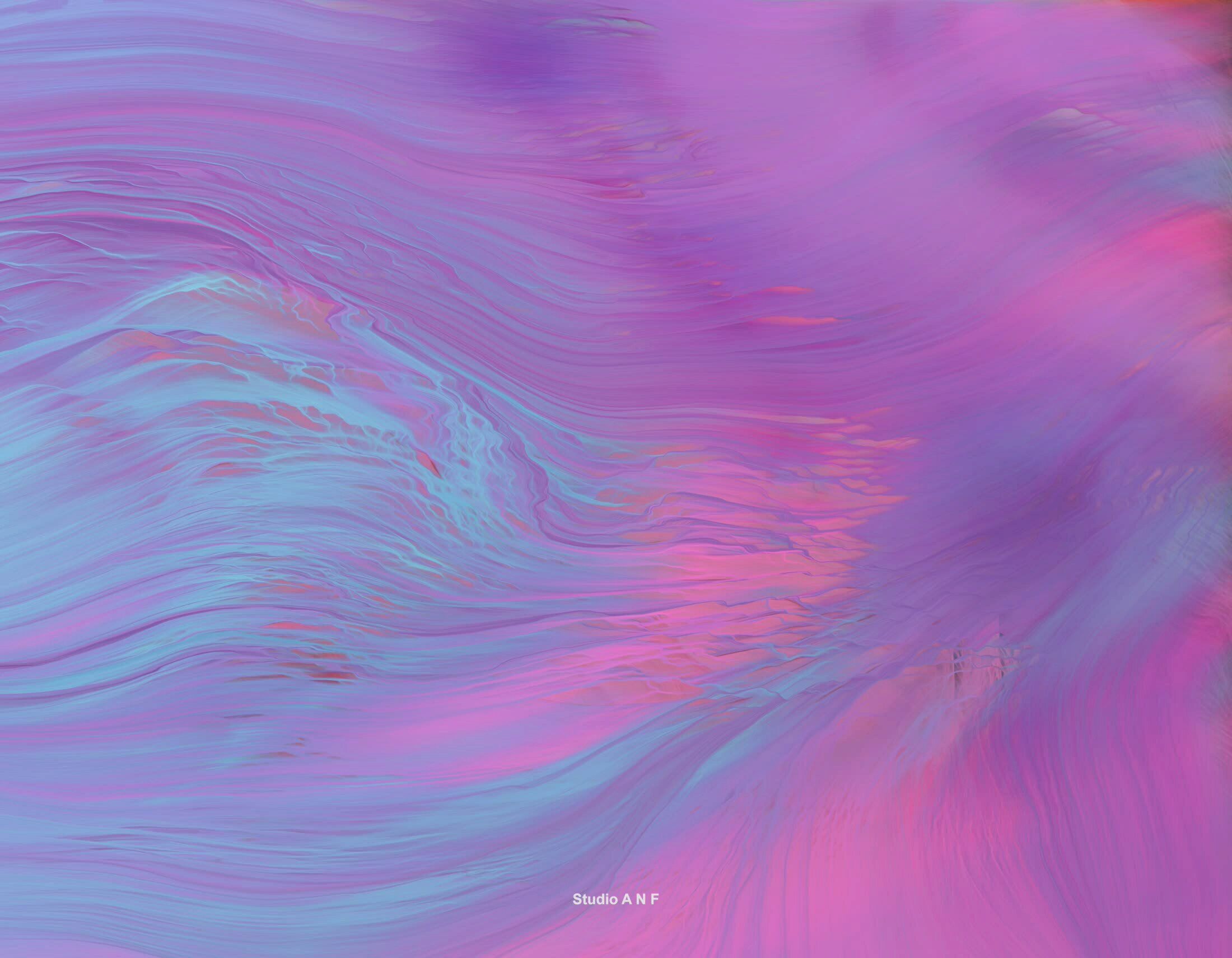



More Projects
In 2019, Pitch Festival, held near Ararat in the picturesque Grampians of Victoria, unveiled an extraordinary public space media art installation that captivated attendees with its innovative design and collaborative creativity. This installation marked a significant moment in the festival’s history, blending visual arts seamlessly with its renowned international music program.
Nic Hamilton coordinated six other international video artists to make works for the festival to ensure visual arts were represented alongside the broadly international music program. Joe Hamilton, Lucy Benson, Michael Tan Ezra Miller ,Tristan Jalleh and Andreas Nicolas Fischer each made site-specific works displayed across the 4 days of the pitch festival.
Photography by Pat Hamilton

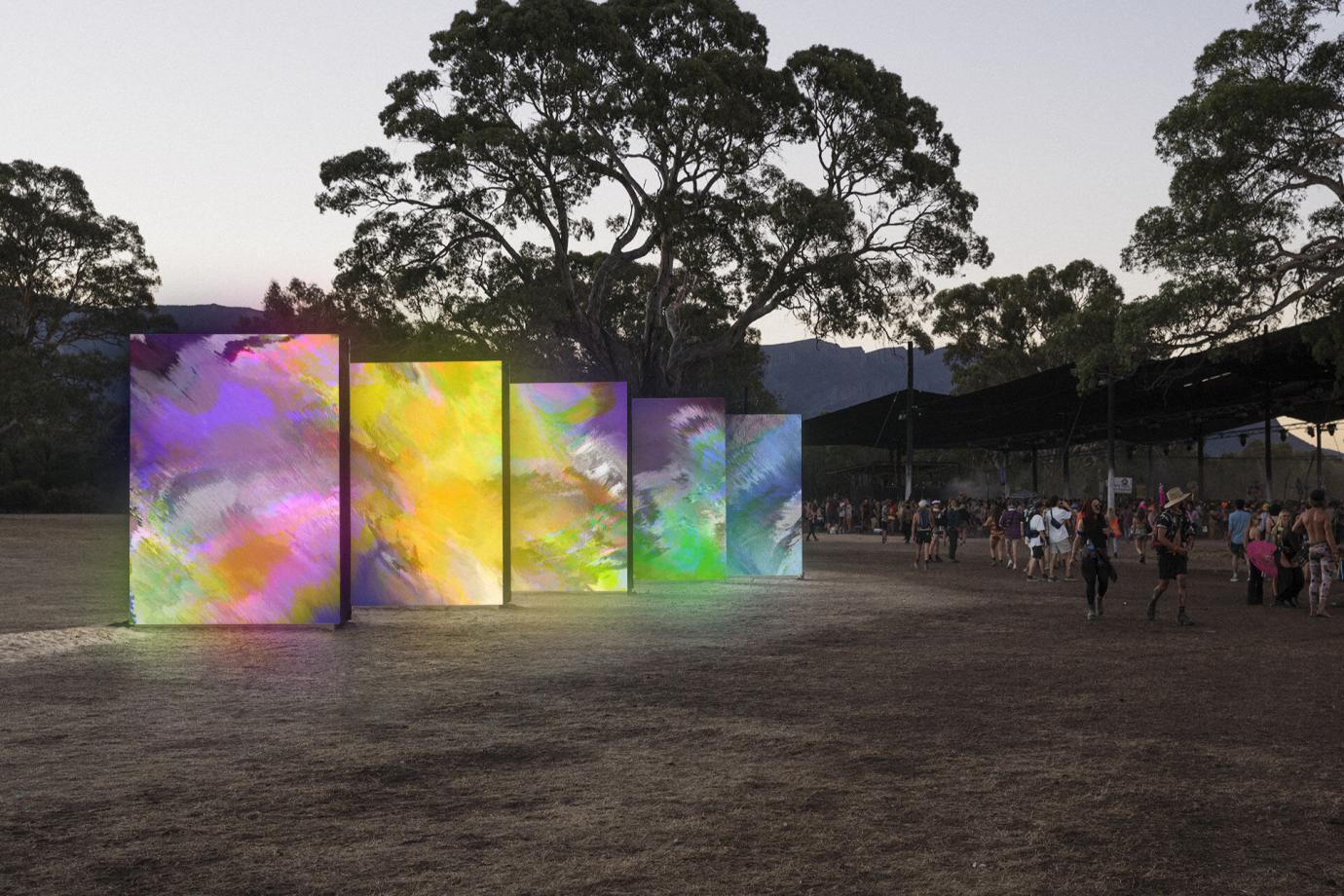
The centerpiece of this installation was an array of ten large-format, high-resolution LED screens. These screens were uniquely arranged back-to-back in groups of five, resembling totem-like structures. This strategic setup not only created an immersive environment but also allowed festival-goers to meander among the luminous panels, experiencing the art from various angles and perspectives.


From a distance, especially when approaching the main stage, this installation presented itself as a singular, unified surface. However, as visitors moved closer, the individual elements of the totem structures became more apparent, offering a dynamic and engaging visual experience. This design cleverly played with the perception of space and form, a testament to the thoughtfulness behind the project.
In summary, the 2019 Pitch Festival’s commitment to integrating visual arts into its program through this innovative media art installation set a new standard for public space art. It highlighted the potential of technology and collaboration in creating engaging, dynamic environments that resonate with a wide audience. As such, this installation stands as a shining example of how public space media art can enrich cultural events, fostering a deeper appreciation of both art and community.
More Projects

The fine gentlemen at Brig.ht Paris liased this custom video installation programming at Banque LCL in Paris. A curated selection of A N F video and software works was shown.

More Projects
Hypervoid X is new high-density procedural pop art c-prints based on the void series, which were generated over a period of days with our custom procedural software written in Processing. The colors are chosen to evoke associations to consumer products, neon lighting, and package design, similar to the artists of the 70s and 80s.
Pop art is a development that risen in the United Kingdom and the United States during the mid-to-late-1950s. The development displayed a test to customs of compelling artwork by including symbolism from well known and mass culture, for example, promoting, comic books and everyday social items. One of its points is to utilize pictures of well known (rather than elitist) culture in craftsmanship, accentuating the worn-out or kitschy components of any culture, frequently using irony. It is likewise connected with the specialists’ utilization of mechanical methods for multiplication or rendering systems. In pop craftsmanship, the material is now and again outwardly expelled from its known setting, confined, or joined with inconsequential material.
Among the early specialists that formed the pop craftsmanship development were Eduardo Paolozzi and Richard Hamilton in Britain, and Larry Rivers, Robert Rauschenberg and Jasper Johns among others in the United States. Pop art is broadly translated as a response to the then-predominant thoughts of dynamic expressionism, just as a development of those ideas.[4] Due to its use of discovered items and pictures, it is like Dada. Pop art and moderation are viewed as art developments that go before postmodern craftsmanship or are the absolute most punctual instances of postmodern art themselves.
More Projects
Megavoid is a series of 3 triple channel generative media installations, each consisting of 3 4 minute videos in 4k UHD resolution. It is an extension of the VOID series, which uses the same generative system with the difference that the color composition is being generated from within instead of being pre-defined. The colors are re-generated at specific intervals during the execution of the software, shifted in hue over time and faded over the last set that was drawn onto the canvas. The installation is evolving slowly over time, revealing new colors through the particles that flow across the canvas.
More Projects
An animated short film about artificial intelligence as psychotherapist and life coach.
Sound design by the talented Mister Kamp
AI voice by Jim D Johnston
Text [below] by Sascha Pohflepp
Many developments in the history of everything have started out as a mimesis of one kind or another. The arm became the lever while the horse became the steam engine and the mind became the computing machine. At some moment then typically comes a sort of inflection point at which the mimic surpasses its model: suddenly, there were hundreds of horses in the space of one. Often, this leads to other effects, ones much less obvious, unintended and almost impossible to foresee. Those horses, history tells us, facilitated a fundamental change in the urban landscape of North America; a change that came with a universe of social, ecological and economic transformations, not all of them for the better.
Cognitive technologies are likely to follow a similar pattern, although their mode of mimicry is much less linear. Consequently, inflection points may differ: instead of being an analog of our own thinking apparatus, they started off as apparatuses of logic. Running mechanically at first, such as the Antikythera mechanism, Charles Babbage’s difference engine or Gottfried Wilhelm Leibniz’s stepped reckoner, those machines could perform as many simple calculations as mechanical resistance (the arm) would allow for. The rise of electrical power and the vast paradigm shift it initiated then changed the mode of resistance into one of scale and integration: logical formations, materialized into ever-shrinking circuits, now powered by an invisible force at the speed of light. A sense of inflection followed: what if our souls fundamentally work the same way? But it turned out to be a mirage: our brains are not digital computers, just as little as the steam engine is a horse.
After more decades of trying to construct an apparatus that can think, we may be finally witnessing the fruits of those efforts: machines that know. That is to say, not only machines that can measure and look up information, but ones that seem to have a qualitative understanding of the world. A neural network trained on faces does not only know what a human face looks like, it has a sense of what a face is. Although the algorithms that produce such para-neuronal formations are relatively simple, we do not fully understand how they work. A variety of research labs have also been successfully training such nets on functional magnetic resonance imaging (fMRI) scans of living brains, enabling them to effectively extract images, concepts, thoughts from a person’s mind. This is where the inflection likely happens, as a double one: a technology whose workings are not well understood, qualitatively analyzing an equally unclear natural formation with a degree of success.
Andreas N. Fischer’s work Computer Visions II seems to be waiting just beyond this cusp, where two kinds of knowing beings meet in a psychotherapeutic session of sorts, consistent with the ideas that Joseph Weizenbaum first raised half a century ago with his software ELIZA. Yet, in Fischer’s interpretation, this relationship presents itself as a peculiar clash of surreal images and a voice tending to the very human. It is perhaps no coincidence then, that some of the images, particularly the carcass of an animal, are reminiscent of Werner Herzog’s 1971 film Fata Morgana, which depicts the Sahara and Sahel deserts to the sound of Lotte Eisner’s voice reciting the Mayan creation myth.
Like Herzog, Fischer created the images first and the voice-over followed after, almost in an effort to decode them and with them offer an experimental analysis of a future to come. Herzog’s film, after all, was initially intended as a science fiction narrative and only later turned into an exegesis of the origin of the world. In both films, the images serve as surreal divining rods to explore the nature of dreams and visions. “What kind of life is it?†asks the therapist. We do not hear the answer, but perhaps we have not heard the question right either: in a time of talk, simultaneously, of both the Anthropocene and the possibility of a posthuman condition, should the question not rather be what the dreams are, at their base of bases? And would it not be only fitting if—after passing the epochal inflection point of a machine that truly knows—its first words would be: “hi there, do you want me play back some of your dreams for you?â€
Sascha Pohflepp, September 2017













More Projects










More Projects

KARST II 01; C-print 160 × 120 cm

KARST II 01; Detail 01

KARST II 01; Detail 02

KARST II 01; Detail 03

KARST II 02; C-print 160 × 120 cm
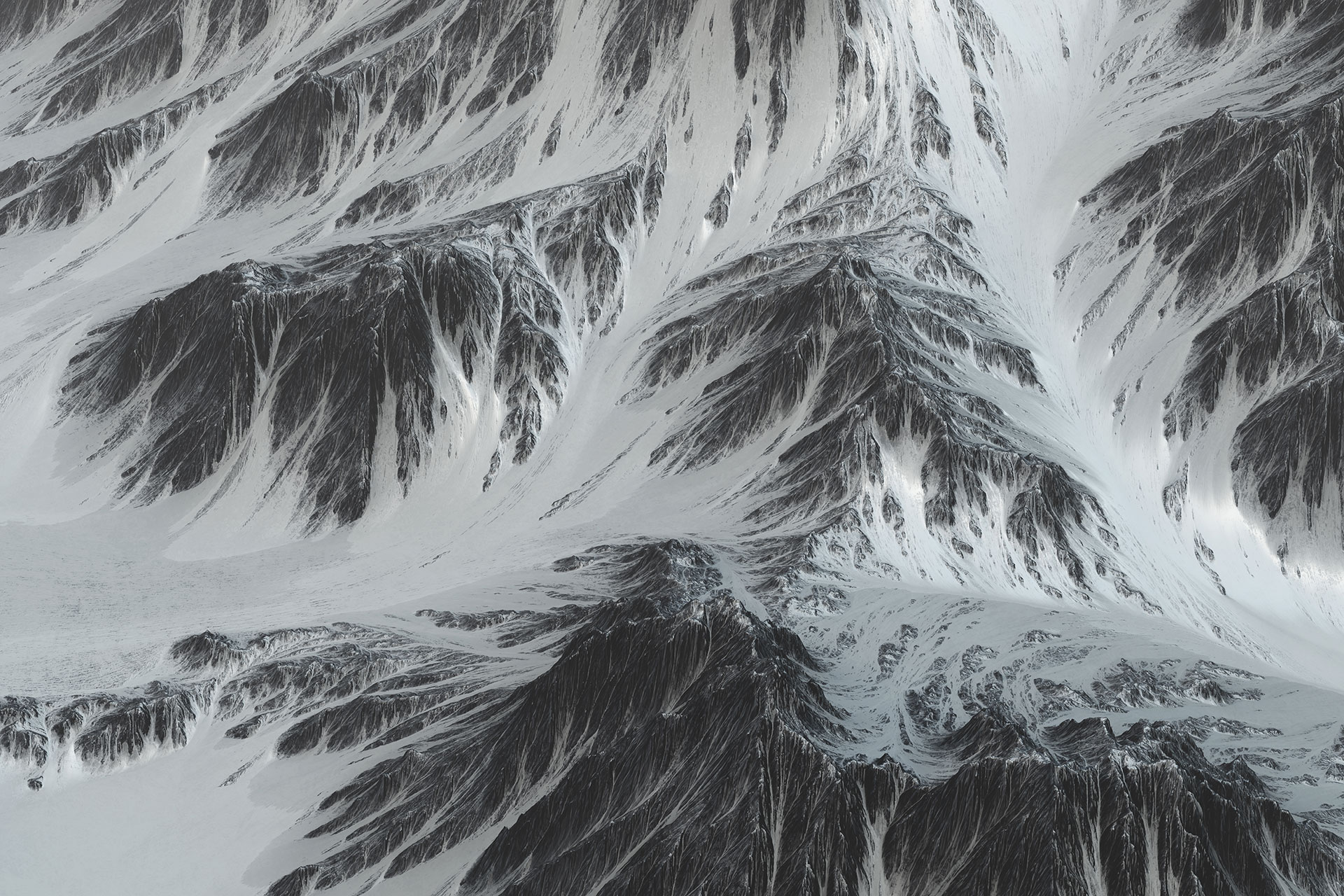
KARST II 02; Detail 01

KARST II 02; Detail 02

KARST II 02; Detail 03

KARST II 03; C-print 160 × 120 cm

KARST II 03; Detail 01

KARST II 03; Detail 02
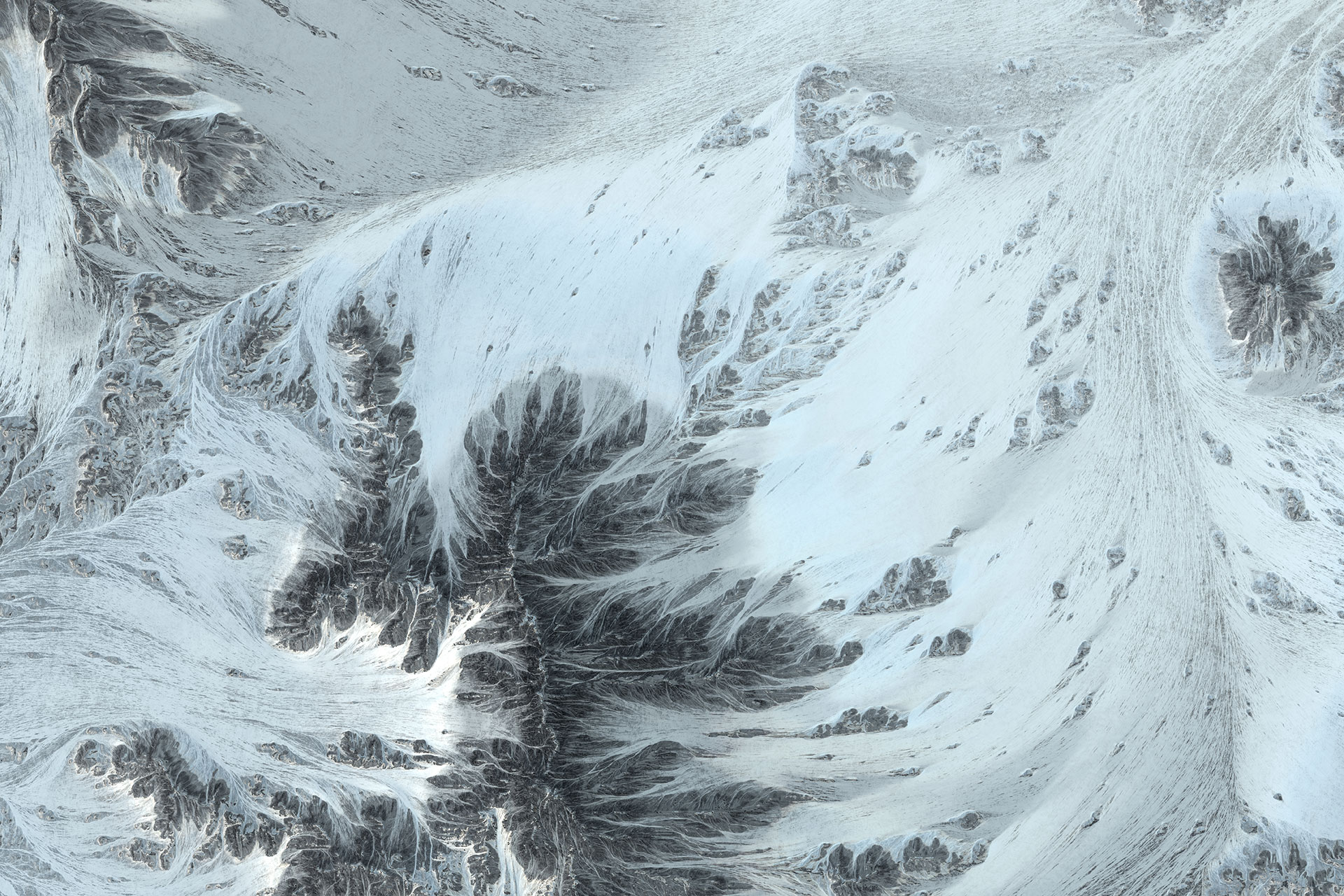
KARST II 03; Detail 03
More Projects
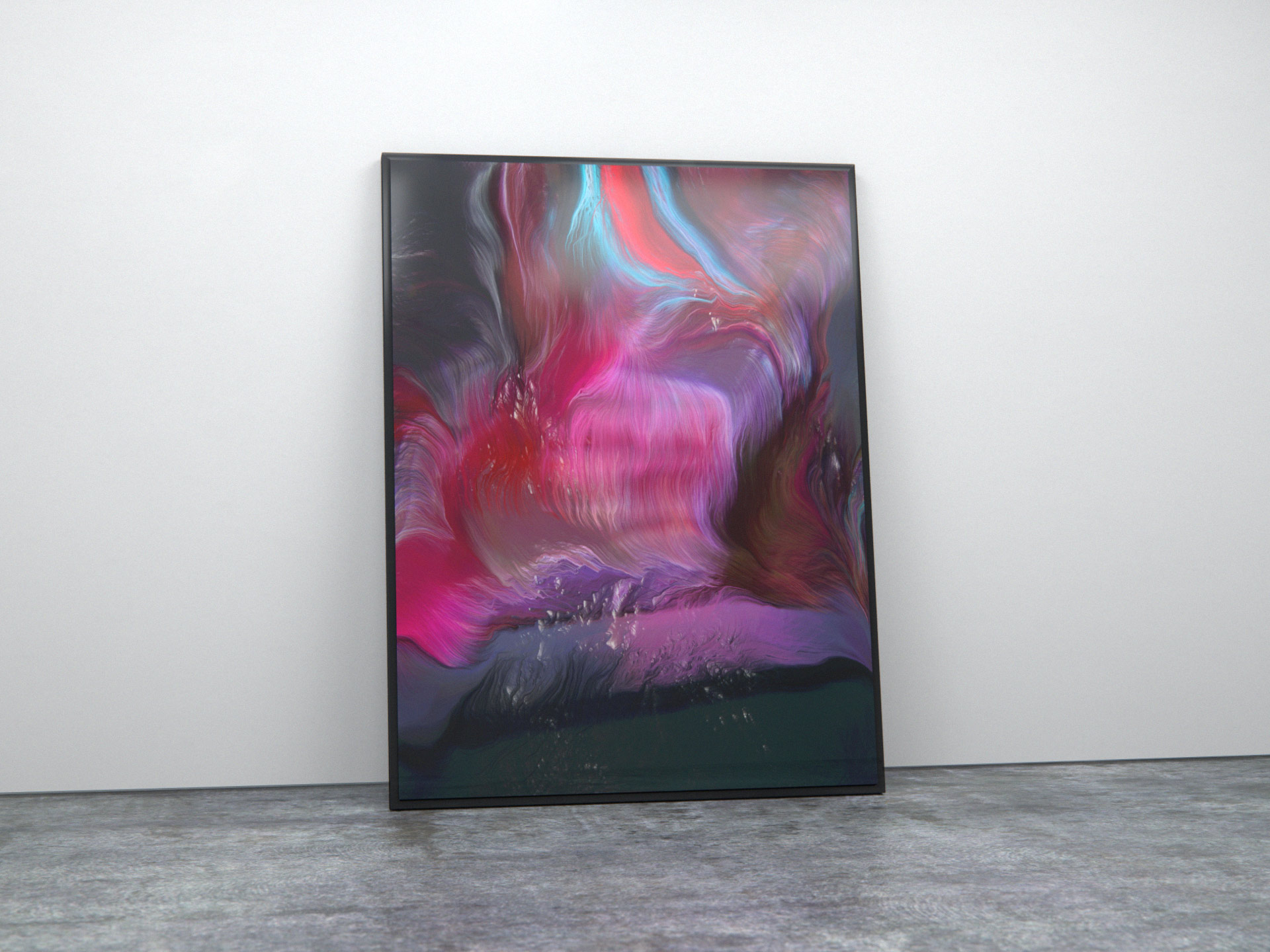
V0ID VIII 01; Installation View

V0ID VIII 01; C-print; 160cm × 120cm

V0ID VIII 02; Installation View

V0ID VIII 02; C-print; 160cm × 120cm

V0ID VIII 03; Installation View

V0ID VIII 03; C-print; 160cm × 120cm
More Projects
Single Channel Video; 4k UHD 3840 x 2160; 4:00; 30fps



More Projects
Schwarm 2k14 I
Schwarm 2k14 II
Schwarm 2k14 III
More Projects

V0ID IV 01 Installation View

V0ID IV 01

V0ID IV 02 Installation View

V0ID IV 02

V0ID IV 03 Installation View

V0ID IV 03
More Projects

V0ID III 01

V0ID III 01
 V0ID III 02
V0ID III 02

V0ID III 02
 V0ID III 03
V0ID III 03

V0ID III 03
More Projects

Photo by Christopher Bauder
Samsung Electronics, the global TV industry leader, is elevating its presence at IFA 2016 with a special exhibition designed by a team of emerging German artists. The installation, entitled The Origin of Quantum Dot, showcases the beauty of Samsung’s SUHD TVs with Quantum dot display, while incorporating video, lighting and musical elements.
The Origin of Quantum Dot is a stained glass-inspired art installation designed by Andreas Nicolas Fischer, Schnellebuntebilder, Christopher M. Bauder and kling klang klong. The artists came together from different creative backgrounds including sound, media art and sculpture to build the unique work of art. The piece contains 45 SUHD TVs and 9,000 shards of stained glass.
We designed The Origin of Quantum Dot exhibition, the largest we’ve ever produced, so that visitors at IFA can directly experience the visual excellence of the premium SUHD TV with Quantum dot display, said HS Kim, President of the Visual Display Business at Samsung Electronics. We are proud to have partnered with such talented, local artists to bring this visual concept to life.

Photo by Christopher Bauder

Photo by Christopher Bauder


More Projects
Second Nature is a series of video loops which show an alternate reality layered on top of our own. During a return to the Alps in the south of Munich where I grew up, I took walks in the forest, filming them from my own point of view and recording ambient sounds.
The video footage was then analyzed and a virtual camera was calculated which reconstructs my movements. Then, working around the path of the camera in space, the environment was created only to cover the field of vision.
The vegetation is an obviously ficticious one, where tropical leaves populate northern European trees. A fern’s structure was misappropriated and given banana leaves. The plants and soil have a dull metallic finish. The POV perspective and gait recognizable in the camerawork shows the influence of first person shooter games, while its enemies and objectives remain absent or unknown. There is no clear narrative or purpose other than the wish to be transported to this world, creating a false memory of a place that does not exist.
More Projects

Void 1448452241591

Void 1448461364556

Void 1448469432396
Credits Extension of the Schwarm Code by the multitalented Mr Pazos
More Projects
Computer art is an art form in which computers play a role in the process or final product, such as display of artwork. Generative art is at the same time more specific and more encompassing than computer art. Generative art refers to art that in whole or part has been created with the use of an autonomous system. The autonomous system can be a computer, but more broadly an autonomous system is non-human and can independently determine features of an artwork that would otherwise require decisions to be made directly by an artist. In many cases, the artist, or human creator, can claim that the generative system represents their own artistic idea. There are, however, cases in which the system takes on the role of creator entirely.
What is Generative Art?
The late 1950s saw artists and designers begin to experiment with mechanical devices and analog computers. This served as a precursor to the work of the early digital pioneers who would follow in the 1960s. Interestingly enough these early digital pioneers were not artists or designers but engineers and scientists, as they had access to more powerful computing resources at university scientific research labs. A. Michael Doll, an engineer, and professor at the University of Southern California, was the first person to program a digital computer solely for artistic purposes. His later computer generated patterns simulated the visual effects of paintings by artists such as Piet Mondrian and Bridget Riley.
One of the challenges faced by early generative artists using computers was the limitation of output devices. The primary source in operation at the time was the plotter, a mechanical device that holds a pen or brush with its movements controlled by a computer. The computer guides the pen or brush across the drawing surface or alternately moves the paper underneath, according to the instructions programmed. The plotter was a linear output device, with shading only possible through crosshatching. This resulted in much of the early output of generative art focusing on geometric forms and structures as opposed to more fluid content. The pure visual form was prized above content by early practitioners as they considered the computer an autonomous machine that would enable them to carry out their visual experiments in an objective manner. Plotter drawings were typically black on white paper and as such most of the early work produced was black and white, even after printers began to be used. One of the first artists to produce plotter drawings in color was Frieder Nake.

Popular Names in Generative Art
In addition to being a pioneer of computer art Frieder Nake is also a mathematician and computer scientist. Nake was one of the first to exhibit computer art, displaying his work at Galerie Wendell Niedlich in Stuttgart. While a few of Nake’s works were limited edition silkscreen prints, the majority of his work was in the medium of China ink on paper, carried out by a flatbed high precision plotter, the Zuse Graphomat Z64. Nake participated in important group exhibitions in the 1960s and 1970s and his book Ästhetik als Informationsverarbeitung (1974) was one of the first to study connections between aesthetics, computing and information theory, and has become a seminal work for the multidisciplinary area of digital media.
Another early proponent of generative art from a scientific background was Herbert Franke. Having studied subjects as diverse as physics, mathematics, chemistry, psychology and philosophy, Frank received his doctorate in theoretical physics in 1950 for a dissertation he wrote about electron optics. In this capacity, Franke experimented with computer art, and from 1973 to 1997 he lectured a course entitled Cybernetical Aesthetic at Munich University. The course was later renamed Computer Graphics – Computer Art. In 1979 Franke was a founding member of Ars Electronica, a cultural, educational, and scientific institute active in the field of new media art located in Linz.
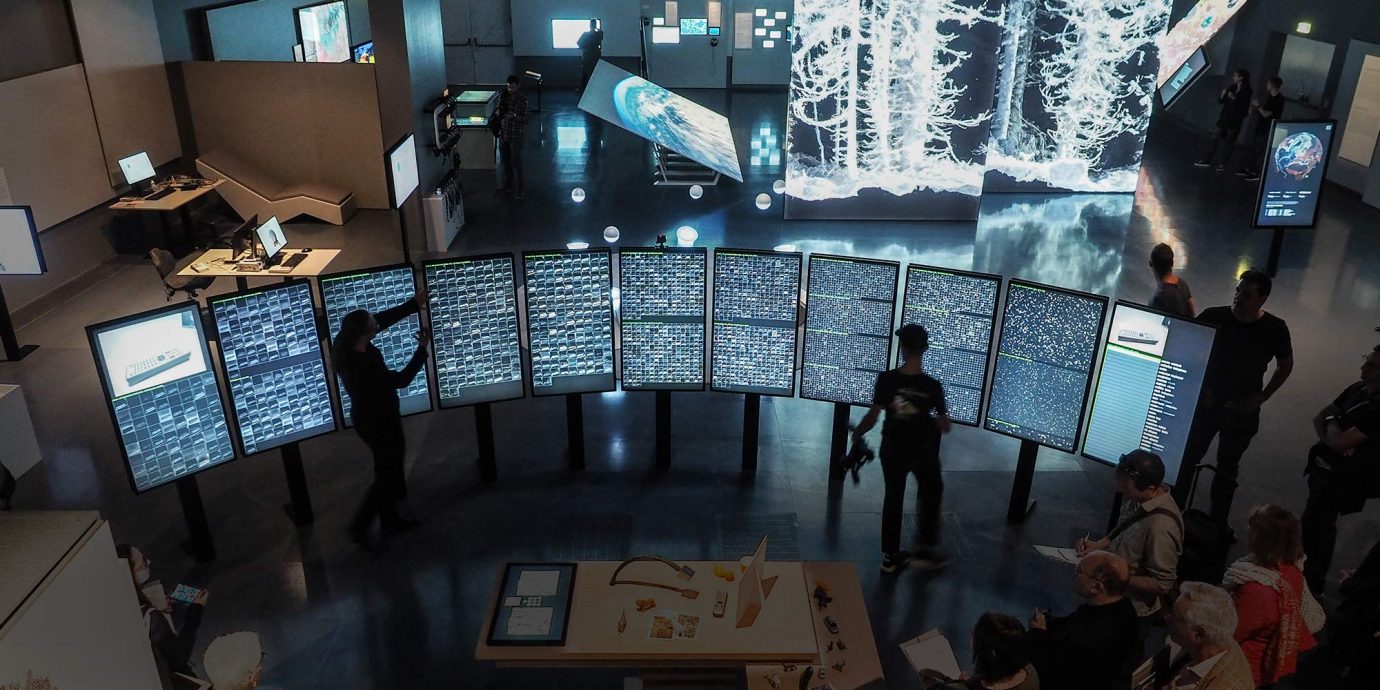
Though the majority of early generative artists were of scientific backgrounds, this was not exclusively the case. Vera Molnar trained as a traditional artist at the Budapest College of Fine Arts. She found her style naturally gravitate to the non-representational, and she experiments with systematically determined abstract geometrical painting as early as the 1940s. After establishing the research group Art et Informatique, which investigated the relationship between art and computing in the 1960s Molnar set out to learn Fortran and Basic, two early programming languages and gained access to a computer at a research lab in Paris where she made computer graphic drawings with a plotter. Another pioneer of digital art that came from a fine art background was Manfred Mohr. Mohr, a graduate of the École des Beaux Arts, was an action painter of the abstract expressionist school who began experimenting with algorithmic art in 1969. His early computer works were based on drawings he had formerly done with a strong emphasis on rhythm and repetition.


Rise of Conceptualism
Simultaneously to the rise of computer art, a more encompassing art movement was coming to the fore: conceptualism was a movement that prized ideas above formal or visual components of artworks. Rather than being a tightly cohesive movement, conceptualism was an amalgamation of various tendencies and took on many forms. From the mid-1960s through to the mid-1970s conceptual artists produced works that completely rejected standard ideas of art of the time. Their primary claim – that the articulation of an artistic idea suffices as a work of art – implied that traditional concerns such as aesthetics expression, technique, and marketability were all irrelevant standards by which to judge an artwork.
Famous Artists in Conceptualism
One artist working in the conceptual vein was Sol LeWitt. LeWitt came to fame in the mid-1960s for his wall drawings, which were essentially the end result of a preconceived set of instructions or simple diagrams for two-dimensional works drawn directly on to walls. The line drawings were purely the result of varying permutations of systems of changing combinations. The parameters of these were chosen by LeWitt himself, and many times the permutations had a systematic ordering about them.

John Cage, arguably one of the most influential musicians of the 20th century, was another artistic proponent of conceptualism. He is perhaps best know for his composition entitled 4’33’’, in which musicians who present the work do nothing aside from being present for the duration specified in the title – the work takes place in the absence of deliberate noise, but not in silence. The content of the work is rather the sounds of the environment heard by the audience during the performance. Cage was a pioneer of chance controlled music. Influenced by Eastern texts on decision-making tools in the 1950s, which he employed in his work, aleatoric or chance-controlled music remained his standard composition method for the remainder of his life.
Ellsworth Kelly’s contribution to conceptualism was his persistent inquiry into the dynamic relationship between shape, form, and color. He was one of the first artists to works with irregularly shaped canvases and his later work in layered reliefs and flat sculpture would further challenge accepted notions of space. Kelly’s intention was for viewers to experience his work with instinctive physical responses to the works’ structure, color, and surrounding space rather than with contextual or interpretive analysis. He encouraged bodily participation between the viewer and the artwork, by presenting bold, contrasting colors, free of gestural brushstrokes or recognizable imagery.

Modernization of Generative Art
It was during the 1970s that generative art began to look beyond the computer labs in which it was being practiced and out towards the greater art world. The term soon came to be used to describe geometric abstract art where simple elements were repeated, transformed or varied to generate more complex forms. In so doing the work of Sol LeWitt, John Cage and Ellsworth Kelly became, in a sense, generative art. The broadening of the definition of generative art was not only happening from inside the computer labs but from inside fine art institutions too. In 1970 the School of the Art Institute of Chicago created a department entitled Generative Systems, which focused on art practices using new technologies for the capture, inter-machine transfer, printing and transmission of images. Theorists began placing their own parameters on what generative art was. In 1988, one theorist, Henry Clauser, identified the aspect of systemic autonomy as a critical element in generative art, highlighting that process (or structuring) and change (or transformation) are among generative arts most defining features, and that these features and the actual term ‘generative’ imply dynamic development and motion. As ways of thinking about generative art changed, the practice of generative art changed and a new wave of artists came about bringing with them fresh ideas and new modes of expression.
Next Generation Trendsetters in Generative Art
Casey Reas is one of the new waves of artists whose conceptual, process-focused and minimal artworks explore ideas through the contemporary lens of software. The images he creates derive from short software-based instructions. These are expressed in different media including natural language, computer code, and digital simulations, resulting in both static and dynamic images. Each iteration reveals a differing perspective on the process and combines with others to produce continually evolving visual traces. Casey Reas is perhaps best to know for having founded, along with Ben Fry in 2001, the Process programming language. The process began as an open source programming language based on Java to assist the visual design and electronic arts communities to learn the basics of computer programming in a visual context. It is still widely used by artists, designers, and educators. Co-founder of Process, Ben Fry’s digital art focuses more on the potential it holds for use in data visualization than as an independent fine art expression of formal quality only. He is widely considered an expert in the field of data visualization.

Marius Watz is another new wave artist who produces works within the visual abstraction category through generative software processes. His work focuses on the synthesis of form as the product of parametric behaviours in both two-dimensional and three-dimensional space. His works display hard edged geometrical forms in vivid colours, working in a diverse field of outputs, from pure software work, physical objects produced with digital fabrication technology to public projections. Watz lectures in Interaction Design at the Oslo School of Architecture and Design in addition to giving workshops and lectures on generative systems, parametric design and computational aesthetics. He is represented by DAM Gallery, an affiliate of DAM Berlin (Digital Art Museum Berlin). DAM is an online resource for the history and practice of digital fine art. It informs on historical and contemporary positions chosen by an advisory panel and exhibits the work of leading artists in this field.

A female pioneer of the new wave is LIA, an Austrian artist who has been producing works since 1995. She uses media as diverse as video, performance, installation, software, sculpture, digital projections and applications. Her primary working material is code which she uses to translate a concept into a formal written structure that can then be used to create a machine or program that generates real-time multimedia outputs. The written code element of her work require engineered precision, despite this, her concept is fluid – she treats the translation process between machine and artist as a conversation. LIA continues this conversation until she is satisfied with the machines interpretation, at which point the generative framework is considered finished and the artwork can then develop. Her works typically combine traditional drawing and painting idioms with the aesthetic of digital art, while being characteristically minimalist and conceptual.

A South American component of the new wave is Leonardo Solaas, based in Buenos Aires. His work explores complex systems through computation, interactivity and generative process for both commercial and personal projects. He has used the Process software in experiments in which he explores the subtle differences and undefined boundary territories between art and generative design, calling into use his background in philosophy. Through his work, Solaas has explored various areas of digital cultures in diverse ways such as data visualisation, interface design, net artworks, interactive installation, mobile games, social networks and collaborative creative platforms. His main focus, however lies in the exploration of algorithmic processes for semi-automated production of paintings, drawings, video and sound.
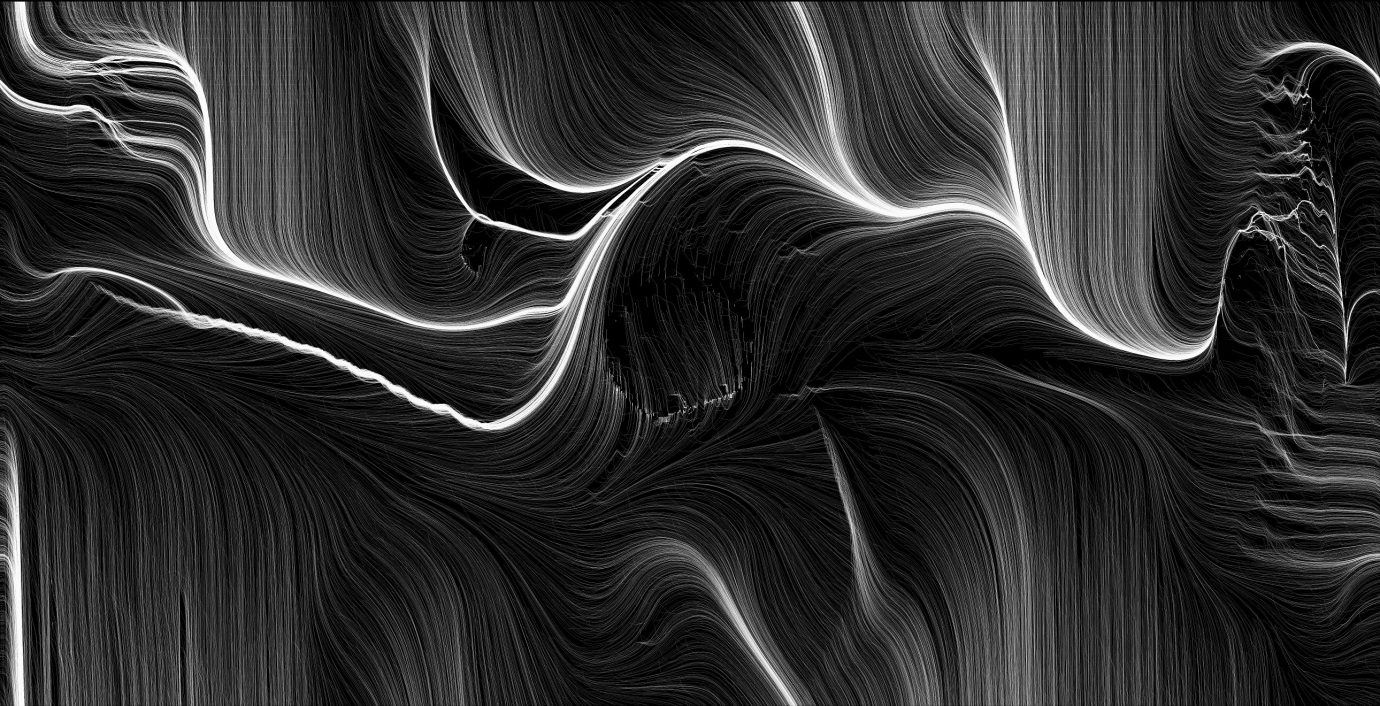
How Generative Art Found its Way to Studios
Towards the turn of the century, much of the focus of generative art practice moved away from artists working independently and towards studios and their production. It is not unlikely that studios would be focussed on the output of a single artist. Despite this, however, studios allow for a more collaborative environment within the practice of generative art, and when it comes to commercial production studios had the added advantage of giving off a more professional flair, much like design agencies, than solo or independent practitioners. One such studio is Field. Field, operating from London, aims to blend physical and digital experiences, connecting audio-visual experiences with photography, sculpture, and film in an attempt to reflect upon how the world is changing through technology. As ever more complex data systems begin to drive our lives, Field’s artistic and design focus is to create new metaphors that help people, brands and institutions better understand these abstract and intangible concepts.
Generative Art Studio ANF in Berlin
Founded in 2008 in Berlin, Studio A N F operates at the intersection of art and technology. Having worked with brands as diverse as Diesel, Audi, Hugo Boss, Samsung and Mercedes-Benz, Studio A N F aims to imbue something of its own aesthetic practice into each of its commercial projects. Through its symbiosis of algorithm and human intervention, Studio A N F has completed projects in a variety of media such as graphics, animation, data visualisation, sculpture and installations in public spaces. Its founder, Andreas Nicolas Fischer is a graduate of the Berlin University of Arts where he studied under professors Ängeslevä and Sauter. Fischer has exhibited at HEK Basel, Kiasma Helsinki, Eyebeam New York, Today Art Museum Beijing, LEAP Berlin, DAM Berlin, Film Museum Vienna, Rua Red Art Centre Dublin and the Southeastern Centre for Contemporary Art in North Carolina in addition to performing alongside the Winston Salem Symphony Orchestra and contributing visuals for the Flying Lotus 2016 tour.

Nervous System is a generative product design studio that creates using a novel process, employing computer simulation to generate designs and digitally fabricate products based in Palenville, New York. Finding their inspiration in natural phenomena, Nervous System writes computer programs based on processes and patterns observable in nature, then uses these programs to create unique and affordable art, jewellery and houseware. Nervous System was founded in 2007 by Jessica Rosenkrantz and Jesse Louis-Rosenberg. Rosenkrantz, an artist, designer, and programmer, graduated from MIT in 2005 with degrees in architecture and biology after which she pursued graduate studies in architecture at the Harvard Graduate School of Design. Following this she founded Nervous System and now also lectures design at MIT. Jesse Louis-Rosenberg is an artist and computer programmer, interested in how simulation techniques can be used in design and in the creation of new kinds of fabrication machines. Jesse studied mathematics at MIT, having previously worked in building modelling and design automation at Gehry Technologies. Through their unique backgrounds Jessica and Jesse have grown Nervous System into what it is today, as it now releases online design applications that enables customers to co-create products in an attempt to make design more accessible. This further allows for endless design variation and customisation. Nervous System has exhibited its work in the Museum of Modern Art, the Cooper- Hewitt Smithsonian Design Museum, and the Museum of Fine Arts in Boston.
Waltz Binaire is another Berlin based studio that designs synthetic realities and moments of engagements in immersive audio-visual experiences, interactive media performances, and digital narratives. Their aim is to translate data into meaningful artworks and convert algorithms into creative patterns by applying generative design and artificial intelligence to their creative process. Their output spans media as diverse as the moving image, mobile platforms, theatres, and unusual stages. Waltz Binaire aims to envision, design and implement new artistic perspectives towards human identity and innovative technology. Waltz Binaire was founded by Christian Mio Loclair, a computer scientist and choreographer.

Refik Anadol Studio is the creative studio of Turkish artist Refik Anadol located in Los Angeles, California. Anadol works in the field of site-specific public art, creating parametric data sculptures, live audiovisual performances, and immersive installation pieces. His works explore the space between digital and physical entities by creating a hybrid relationship between architecture and media arts with machine intelligence. Anadol holds a master’s degree in fine art from the University of California specialising in media arts and has won many awards in his field. By embedding media arts into architecture, Anadol questions the possibility of a post digital architectural future in which there are no non-digital realities. Through his work, he thus suggests that all spaces and facades have the potential to be utilised as the media artist’s canvas. Anadol seeks to explore the new challenges that ubiquitous computing imposes on architects, media artists, and engineers such as how our experience of space is changing now that digital objects, ranging from smart phones to urban screens, have colonised our everyday lives, how media technologies have changed our perception of space, and how architecture has embraced these shifting perceptions.

Generative Art – The Next Gen Art
As we see this questioning of the place of generative and computer art in the future due its immersive nature in contemporary society, it is a good time to look to the past, to the roots of generative art. Starting with a handful of scientists in the 1950s, then being taken over by those operating in creative fields, until a harmony is put forth in which science, art, and design can all coexist within the field of generative art at the beginning of the 21st century, as it gains more traction within popular culture. Generative art is certainly set to make further leaps and bounds in its field while spilling over into others as it helps us better understand the world around us.
Text by Kayleen Wrigley
More Projects


More Projects
Collaboration with Italian Fashion House Ilaria Nistri for their A/W 15/16 collection.


The collaboration between Berlin-based design studio ANF and Italian fashion house Ilaria Nistri for their Autumn/Winter 15/16 collection represents a fusion of high fashion with cutting-edge digital artistry, yielding a unique blend of aesthetics that pushes the boundaries of traditional design. This partnership marked a significant moment in the fashion industry, showcasing how technology and generative designs can create innovative patterns that not only accentuate the human form but also narrate a story of digital evolution within the fabric of high fashion.
ANF, known for its pioneering work in digital design and generative art, brought a fresh perspective to Ilaria Nistri’s sophisticated and avant-garde approach to fashion. The studio’s expertise lies in creating complex patterns and visuals through algorithms and computational processes, a technique that transforms the traditional approach to textile design. For the A/W 15/16 collection, ANF focused on developing black and white generative patterns that were both abstract and deeply intricate, reflecting the collection’s theme of natural elements intersecting with digital realms.



Ilaria Nistri, an Italian fashion house renowned for its exploration of materials, shapes, and the interaction between light and shadow, provided the perfect canvas for ANF’s art. The collaboration was an exploration of contrasts – between the organic and the synthetic, the tangible and the virtual, the traditional and the futuristic. Ilaria Nistri’s designs, known for their fluidity and ethereal qualities, were enhanced by ANF’s generative patterns, adding a layer of complexity and depth that challenged conventional fashion narratives.
The black and white color palette chosen for the generative patterns emphasized the collection’s focus on duality and harmony. Black and white, as fundamental opposites, symbolize the balance between light and darkness, presence and absence, and the interplay between these forces. ANF’s patterns in this monochromatic scheme were not merely decorative but carried within them the essence of dynamism and transformation. The patterns seemed to move and evolve, mirroring the natural processes that inspired them, from the branching of trees to the flow of water, all captured within a digital framework.



The collaboration between ANF and Ilaria Nistri was not only a testament to the possibilities of integrating technology with fashion design but also highlighted the importance of interdisciplinary approaches in pushing creative boundaries. The generative patterns developed for the A/W 15/16 collection were more than just fabric designs; they were a statement on the evolving relationship between humans and technology, and how this synergy can lead to unprecedented forms of beauty and expression.
In conclusion, the collaboration between Berlin-based design studio ANF and Italian fashion house Ilaria Nistri for their A/W 15/16 collection stands as a landmark in the convergence of technology and fashion. It showcases how the use of generative design can bring a new dimension to textile patterns, creating garments that are not only visually stunning but also embody the principles of innovation and sustainability. This partnership has set a precedent for future collaborations between designers and digital artists, suggesting a future where fashion continues to evolve through the integration of new technologies, and where the boundaries between the digital and the physical are further blurred in the quest for new forms of expression and creativity.
More Projects
Generative 360° realtime audiovisual installation & WebGL interweb experience
The fine people from Postmatter London approached A N F in the spring of 2k14 to create a bespoke installation view for Diesel, purveyors of lustrous Italian denim, timed for the freshly opened flagship store at Piazzi di Spagna in Rome. Luckily, the talented Mr Pazos, who had collaborated with me on the SuperRatings project came on board early on developing the concept and 3d framework in Processing. More good fortune was upon the project, because composer & musical mastermind Nikolai von Sallwitz was available to do the generative score for the piece.
The final installation software was then ported to 3js for the online version.
The official Press release:
On the occasion of its latest flagship store opening in Rome, Diesel has paid homage to the city with an unprecedented art experience, an exclusive screen-based artwork created in partnership with POSTmatter magazine. Drawing together a creative and forward-looking vision, this collaboration showcases exciting possibilities in digital art.
The choice of the Berlin based artist Andreas Nicolas Fischer made possible to bring to life an abstract digital organism, housing it in an enclosed atrium that will serve as the gateway into the store. With all walls completely tiled with screens, and a mirrored ceiling, the space will envelop its audience and involve them to “feed” the interactive art piece. Based upon localised data sources drawn directly from Rome, the flux and evolution of the city will be brought into the space through Fischer’s striking, animated visuals.
Rome and its powerful role in shaping art history as we know it are central to the new commission. Diesel store is located in the heart of the city – next to the Spanish Steps, and this installation unites the surrounding landscape and its equivalent digital space into a pulsating heart of information.
The digital organism will be first drawn from topographical data, taken from maps of Rome. Its growth and movements will be based upon the use of #rome and #roma online. Evolving into new visual outcomes, the city’s data will create a starting point from which Fischer’s beautiful, impressionistic forms can grow. Expanding upon the immersive and responsive nature of the in-store installation, the shape-shifting organism will also be accessible for participants around the world through social networks. Each time the hashtag ‘#POSTroma’ is used on Twitter, a unique response will be tweeted back to each individual user. A specially programmed algorithm created by Fischer will generate a haiku poem and a striking screenshot of the in-store visual mutation at that moment, both of which will be delivered directly to the Twitter account of the original user. Diesel has been consistently promoting and supporting creativity in all its forms, with a special focus on independent artists that capture their drive towards a bold future. Leading the way, the POSTroma project is at the forefront of a new age of boundary crossing creative participation.
Producer PostMatter Lana Elie of PostMatter
Art Direction Yann Binet with PostMatter
Creative Code Abraham Pazos Solatie
Video Documentation Pietro Daviddi









More Projects
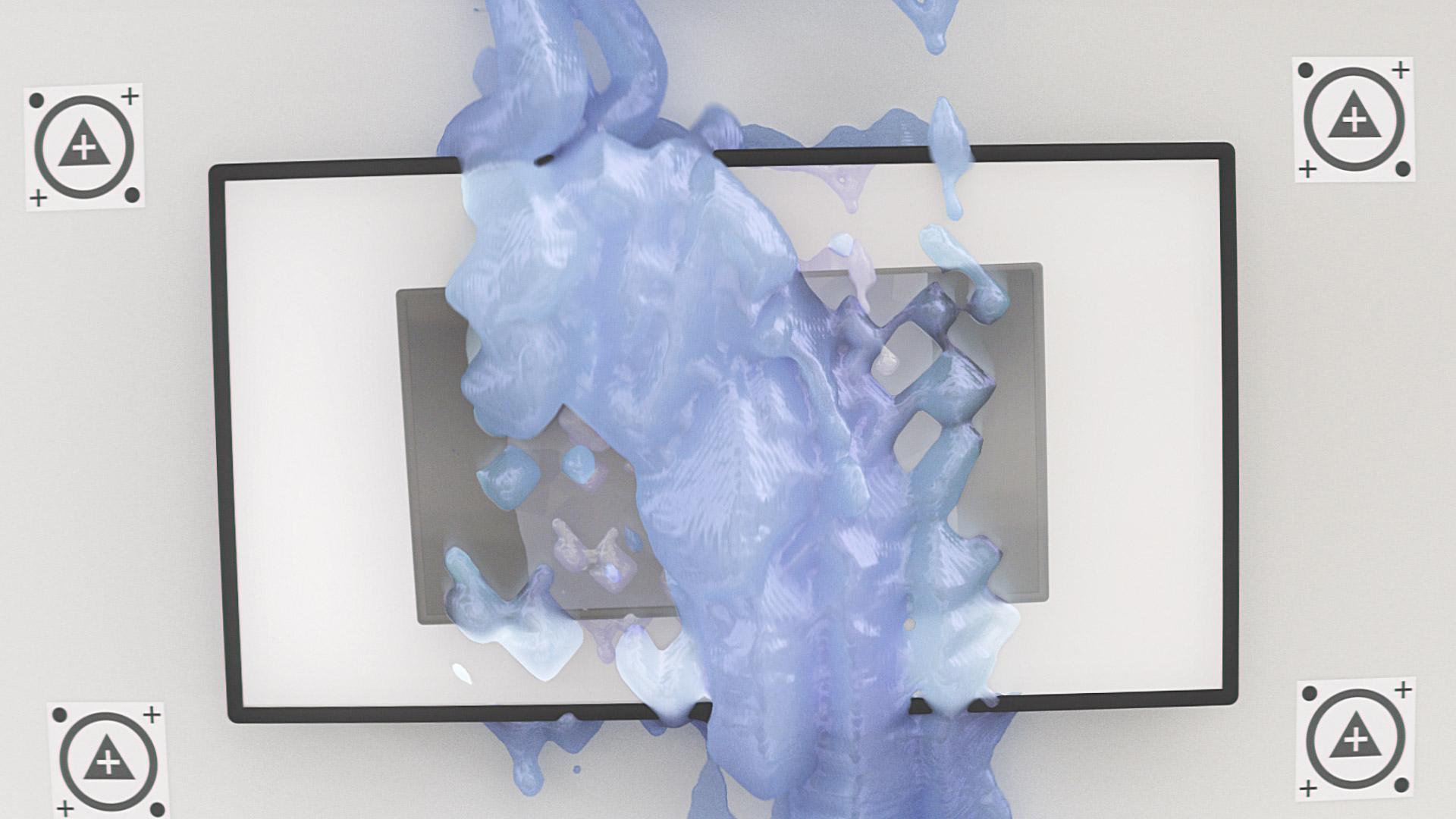
Chris Woebken, Sascha Pohflepp and Andreas Nicolas Fischer will spend their time on Governors Island commissioning a series of computer simulations that will run within a meticulous virtual recreation of Building 15. The individual simulations are being created by a selection of 3D artists who form part of a community that is exploring the aesthetics of simulation in the context of contemporary computer graphics, often disseminating their work on social media rather than in an academic context. These participating artists include: Kai Kostack, Mohamad Zeina, Gottfried Hofmann, Tayfun Ozdemir and Andreas Nicolas Fischer.

Island Physics – Exhibition Walkthrough
Island Physics will turn Eyebeam’s house on Governors Island into a testing-ground for alternate realities, simulating the impossible in a living room.
So Meta “B” from A N F
Apple Fall by Kai Kostack
Floating Fluid Particles by Blazraidr
More Projects

Installation View at Synthetisch Vernünftig at the LEAP Berlin curated by John McKiernan and Daniel Franke


Brute Force Method V – A

Brute Force Method V – B
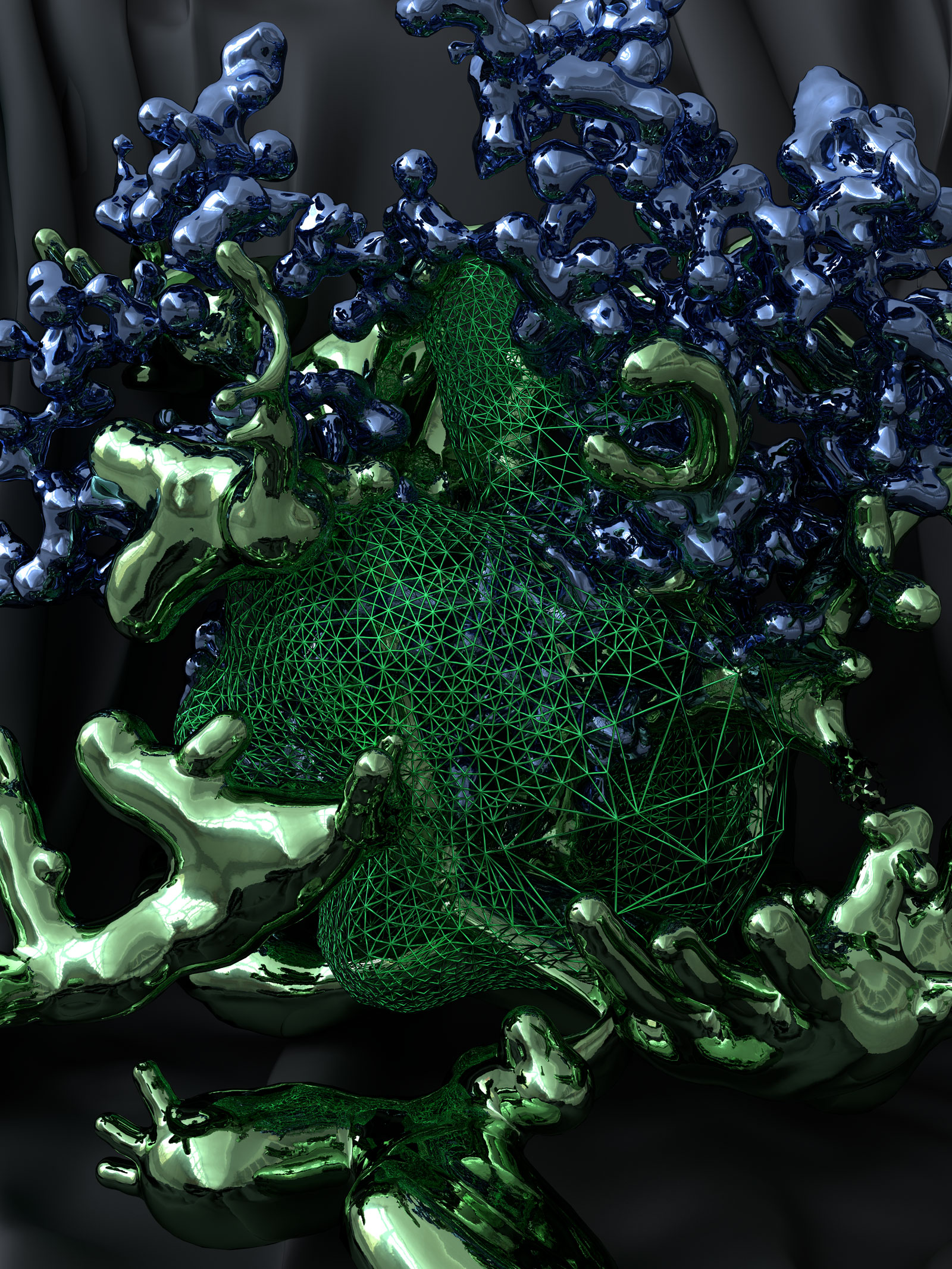
Brute Force Method V – C

Brute Force Method V – A – Detail 01
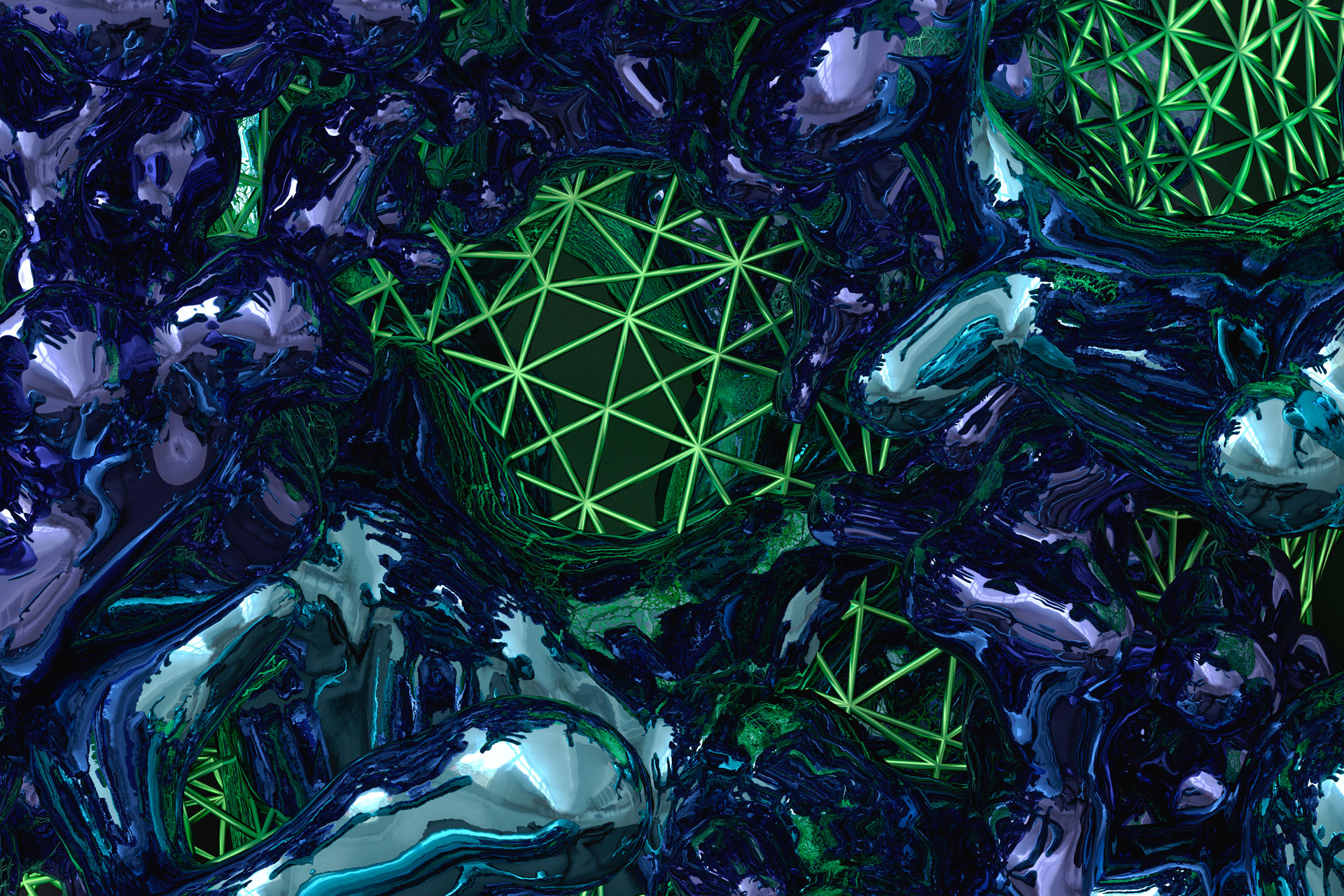
Brute Force Method V – A – Detail 02

Brute Force Method V – A – Detail 03

Brute Force Method V – A – Detail 04



